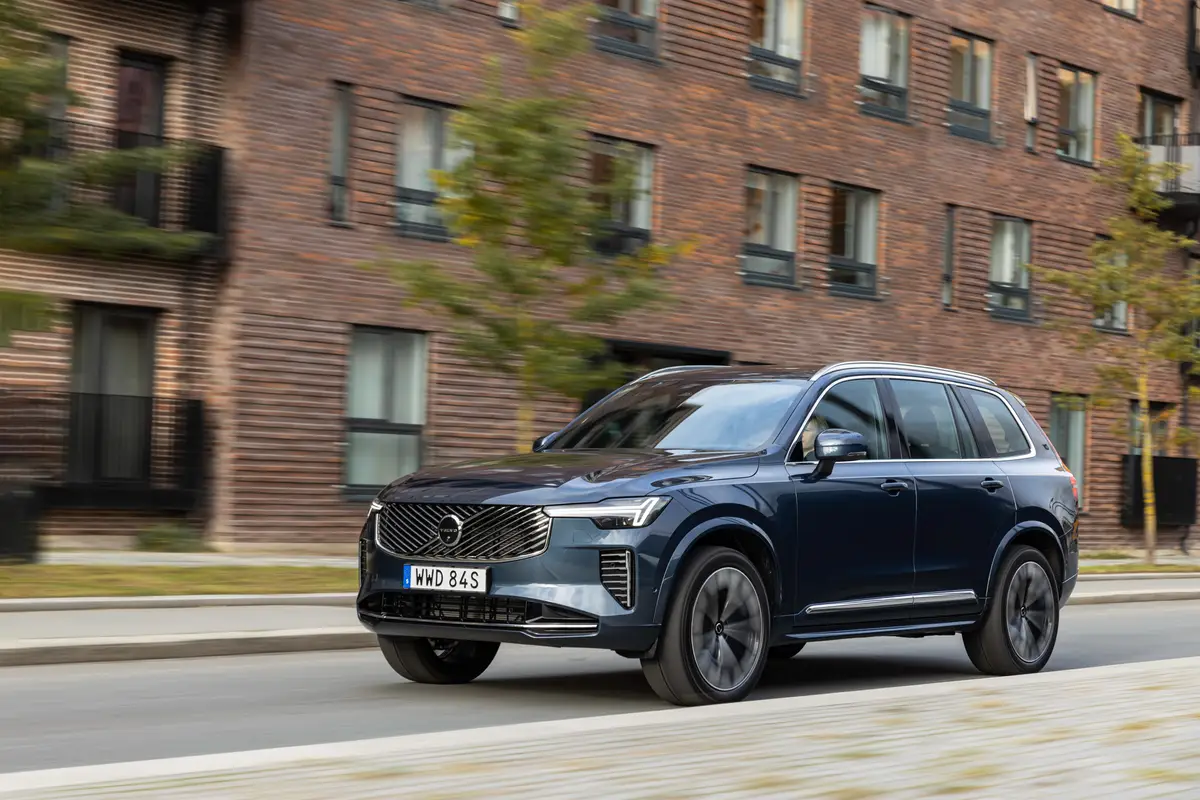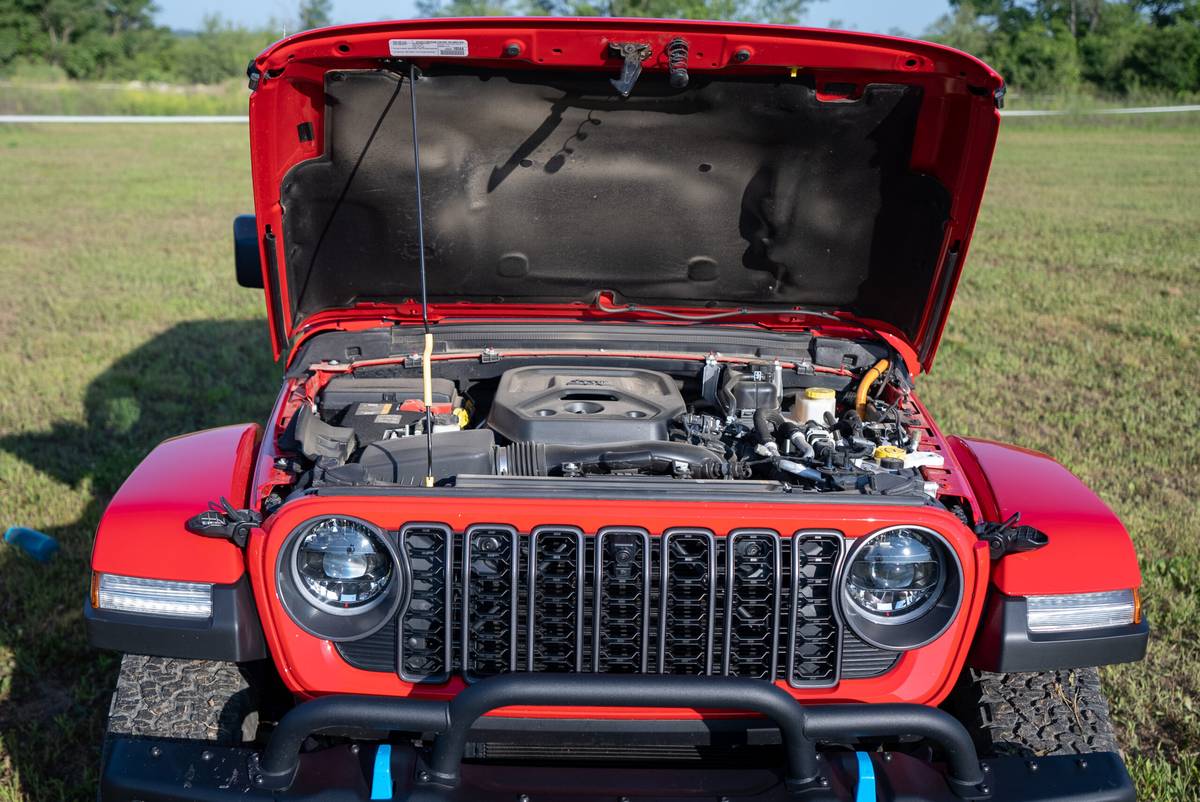2025 Ford Explorer Review: Still Fun, Still Flawed

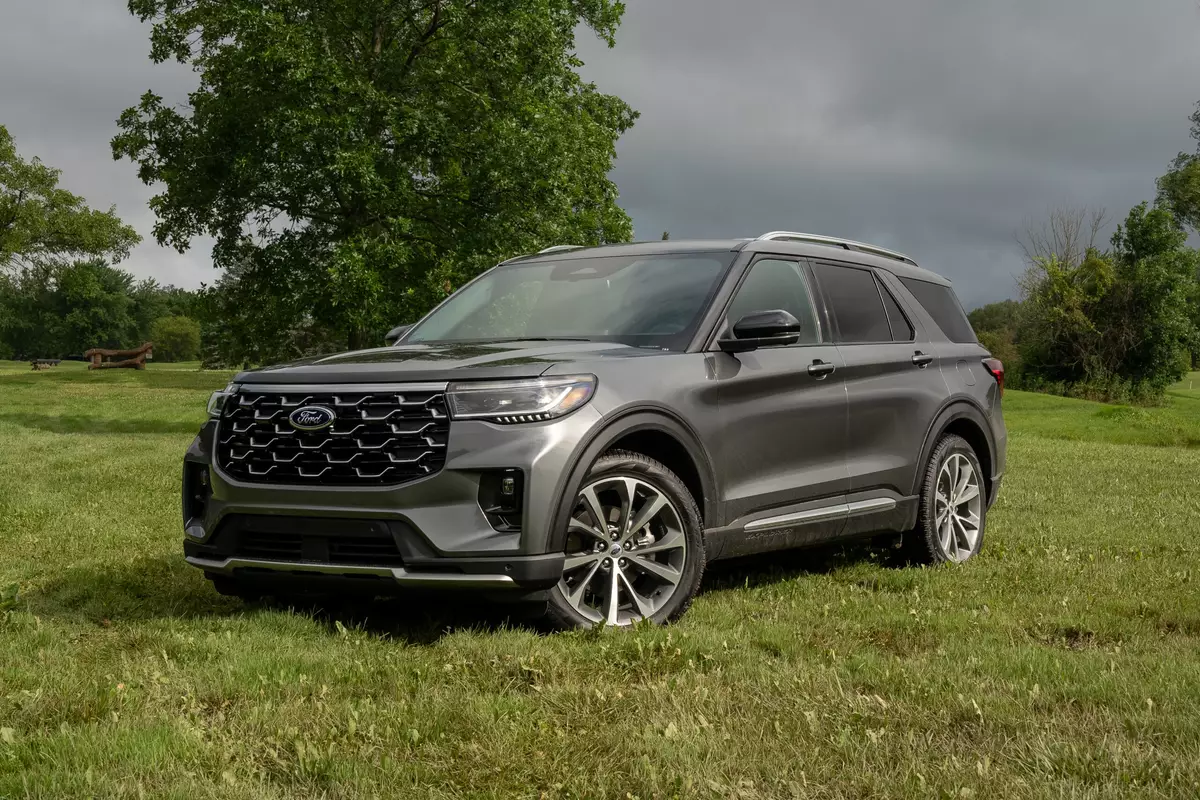
The verdict: Absolutely one of the most entertaining three-row SUVs to drive, the freshened 2025 Ford Explorer still falls short on people hauling and value for the money.
Versus the competition: The sports car of the three-row SUV set, the Explorer, is a driver’s choice — but competitors like the Volkswagen Atlas, Hyundai Palisade, Kia Telluride, and the redesigned Chevrolet Traverse and GMC Acadia still beat it on cargo space, passenger comfort and price.
The new 2025 Ford Explorer has received some updates as part of what we in the auto industry call a “mid-cycle refresh,” meaning it’s been given some minor changes to keep it fresh and competitive in the ever-changing, cutthroat world of three-row family SUVs. For 2025, the Explorer gets some minor styling updates, an all-new interior, some new technology and a simplified ordering structure that cuts down the number of trim levels by half in order to simplify production, boost quality and improve reliability (and profitability for Ford). The end product is a freshened three-row SUV that looks to maintain its sales success in the face of hot new products from GM, Toyota, Volkswagen and more. But with the overall layout, structure and powertrains of the Explorer not changing, is this refresh sufficient to keep up the momentum? I drove the new ‘25 Explorer through the rural farm country of southeast Michigan to find out.
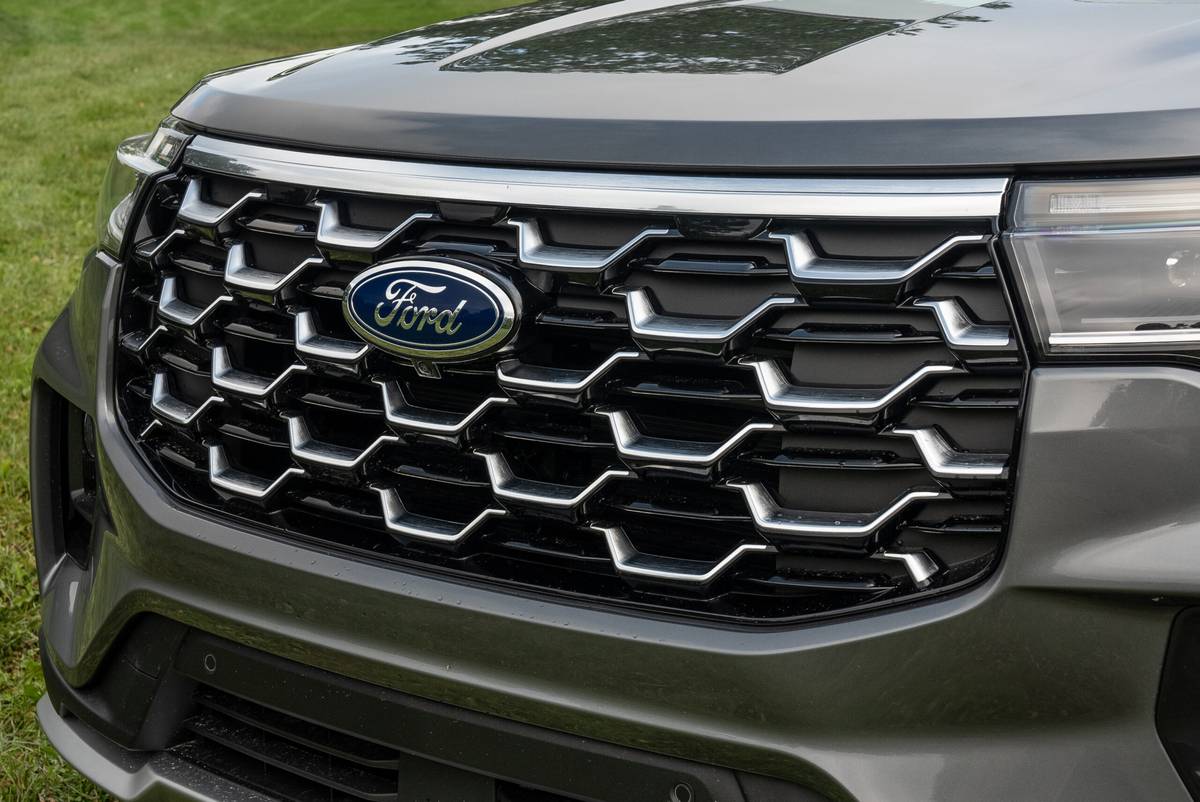

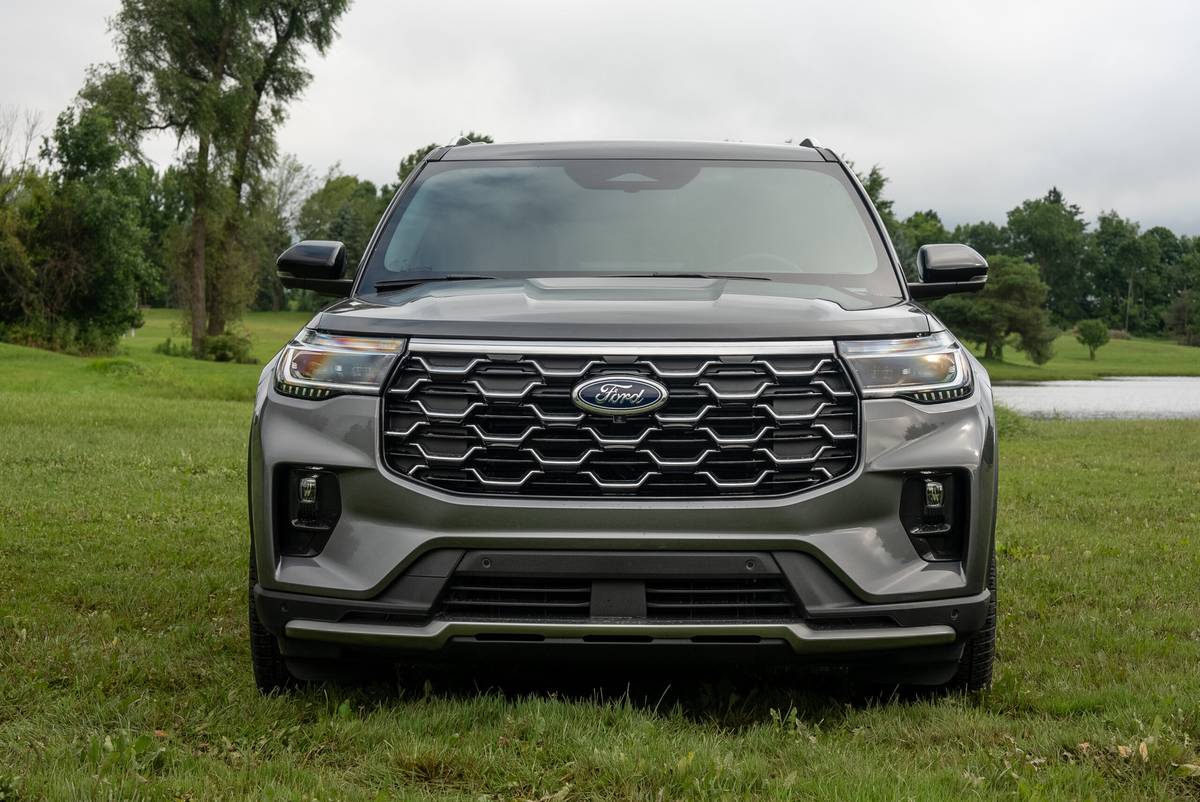
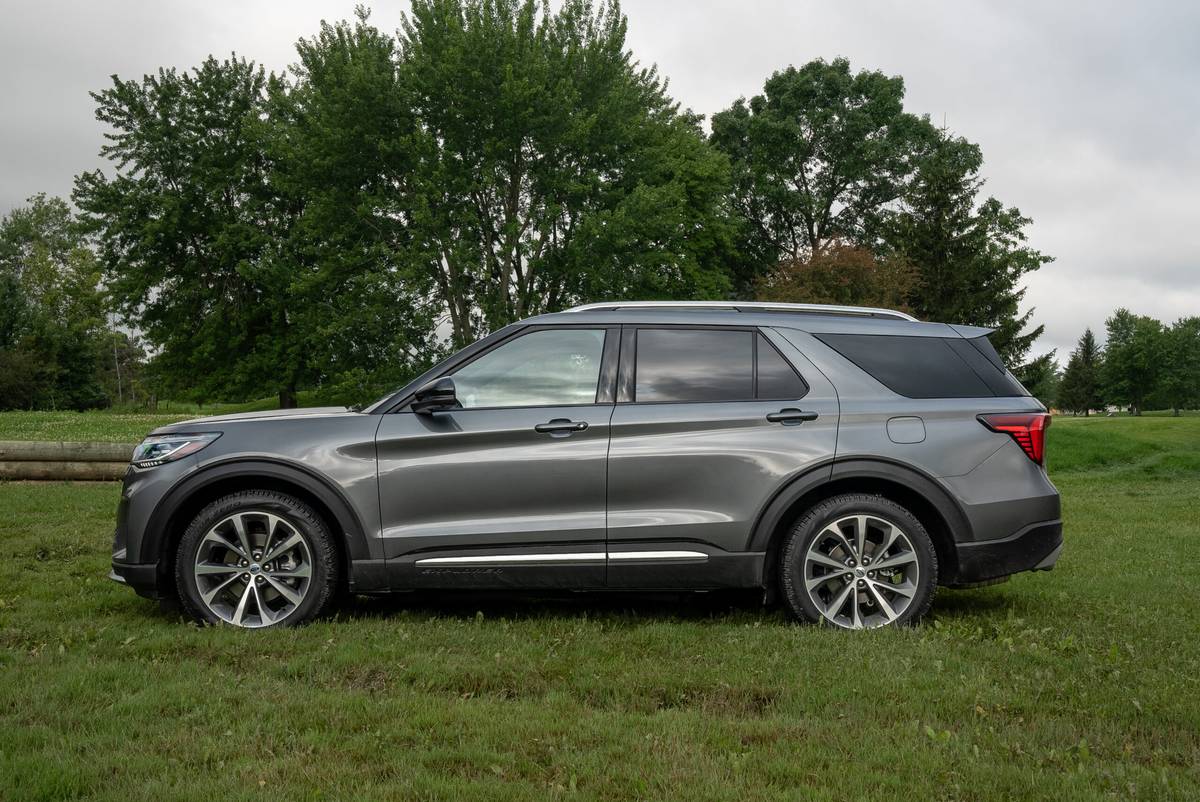
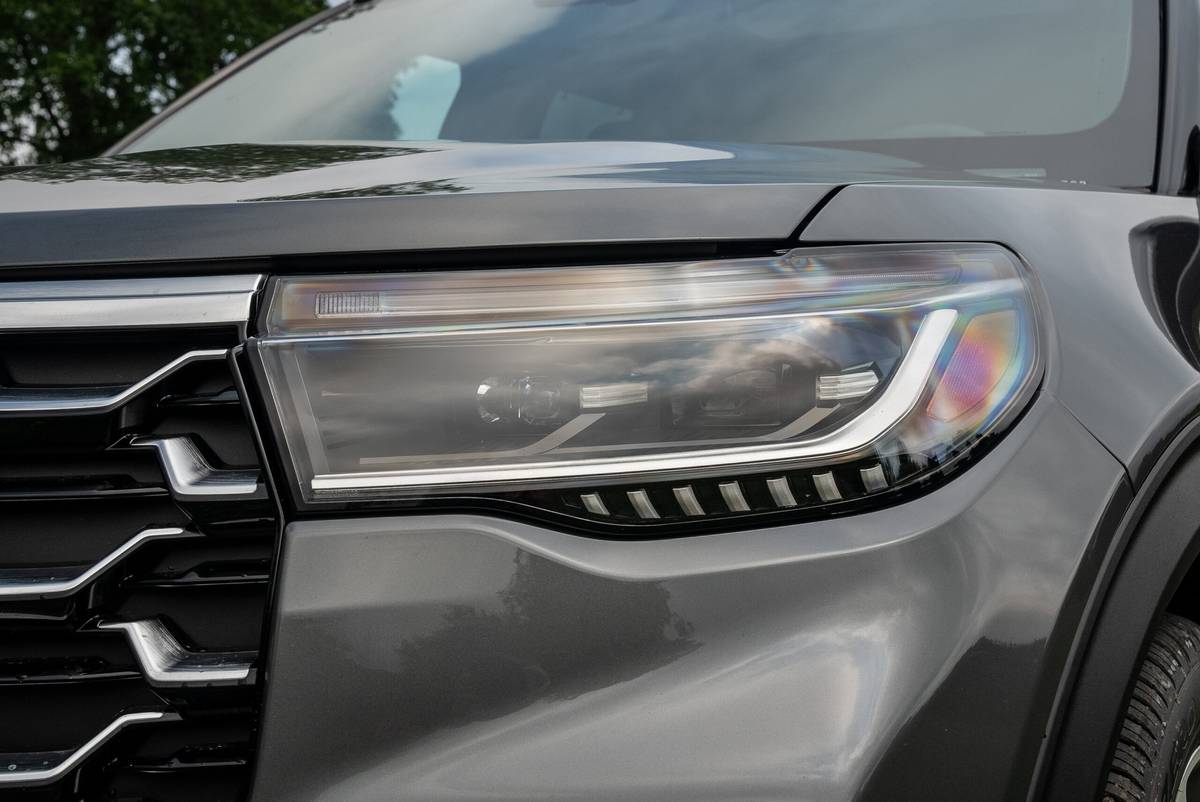
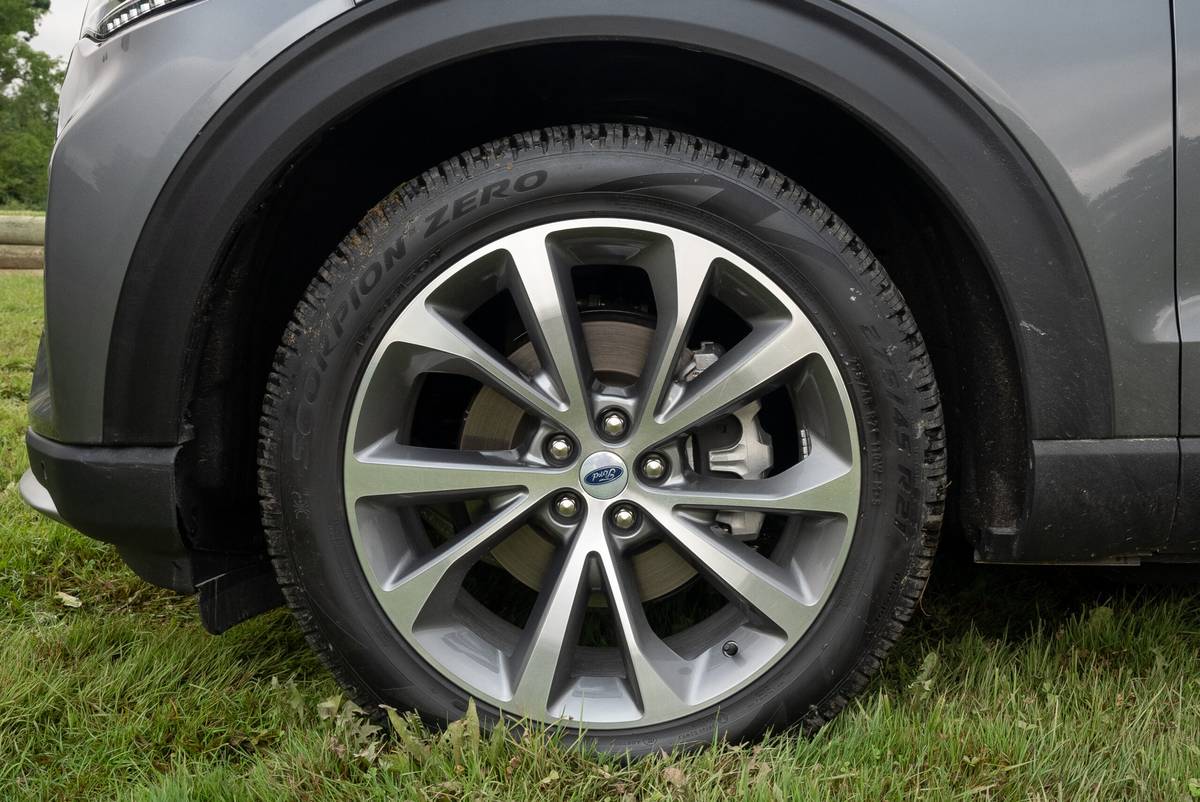
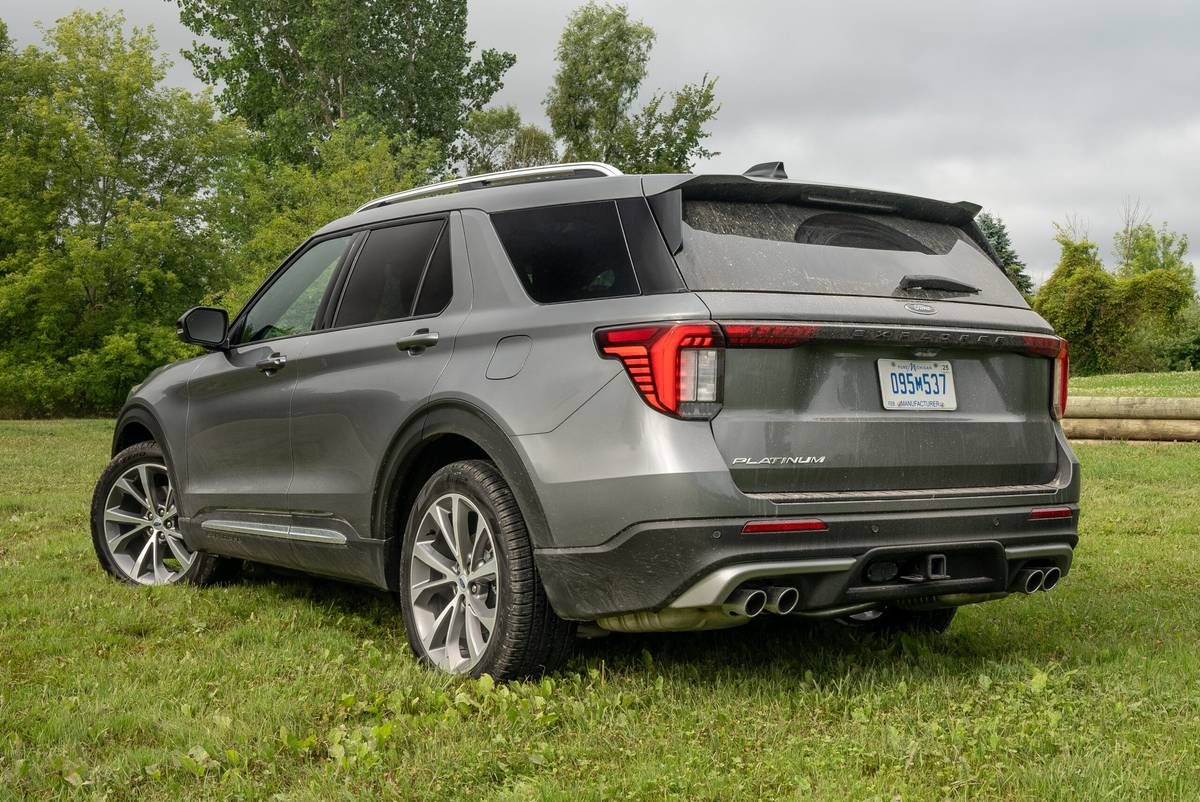

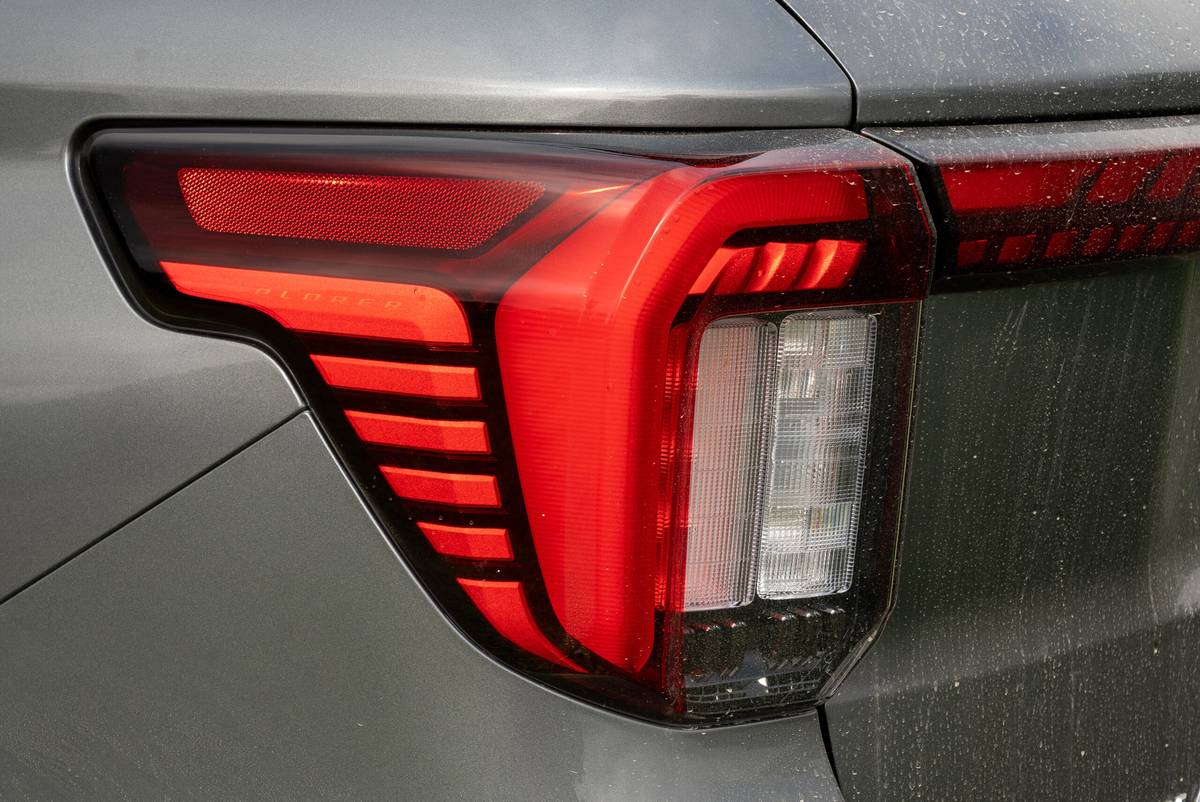
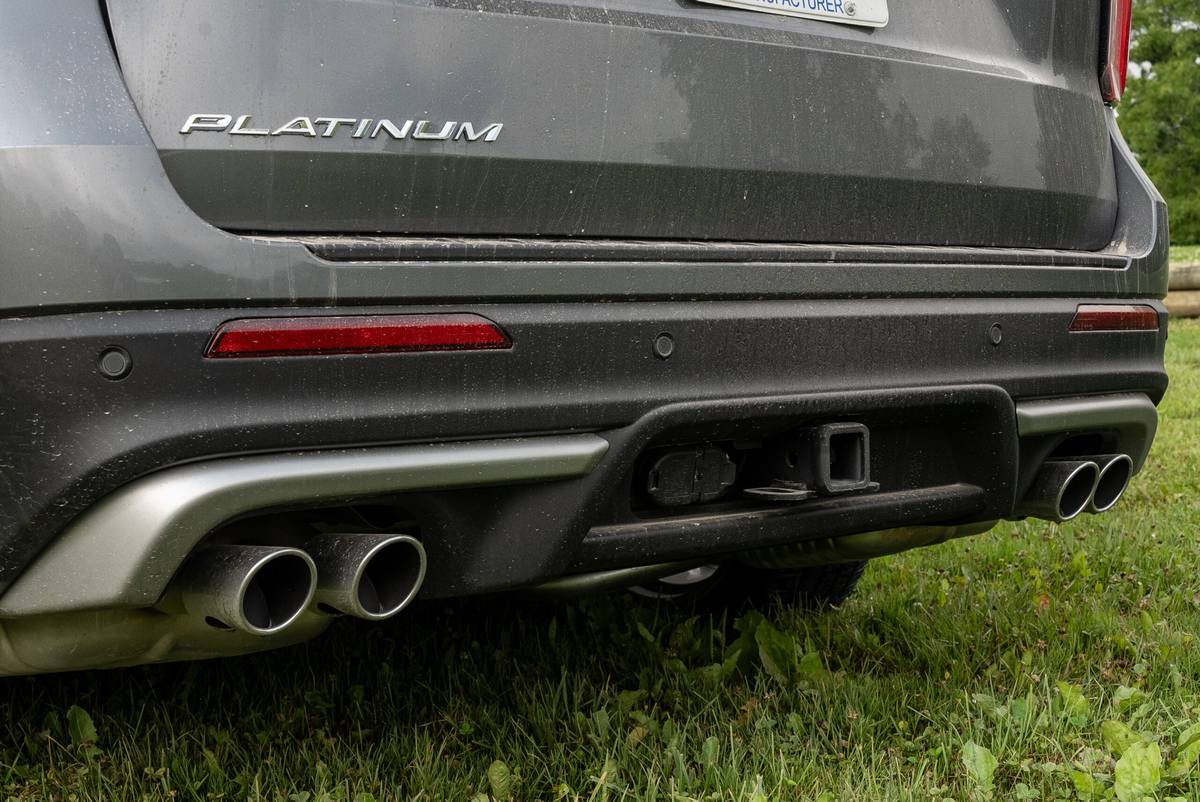










A Subtle Nose Job
You pretty much need to compare the ‘25 Explorer next to a ‘24 model in order to see the differences between the two — Ford didn’t put much effort into styling updates. There are new headlights and a deeper grille with some different front bumper treatments, and there’s a new full-width bar with lighting that connects the two outboard taillights for a more futuristic look, but that’s pretty much it.
The bigger news is that there are only four trim levels now: Active (the new base trim), ST-Line (the sporty-looking one), ST (the actually sporty one) and Platinum (the luxurious one) — no more cheap “base” variant, no Limited near-luxury model, no more King Ranch cowboy cruiser and no more Timberline off-roader (for now, anyway; Ford has hinted that an off-road spec is coming). Options are now bundled more into packages and the four trims, which is honestly how a lot of competitors (very successfully) do it. This is Ford catching up to how the rest of the industry plays, and it’s likely to help its bottom line and quality ratings as a result while still delivering the features that customers are looking for, so we ain’t mad about it.
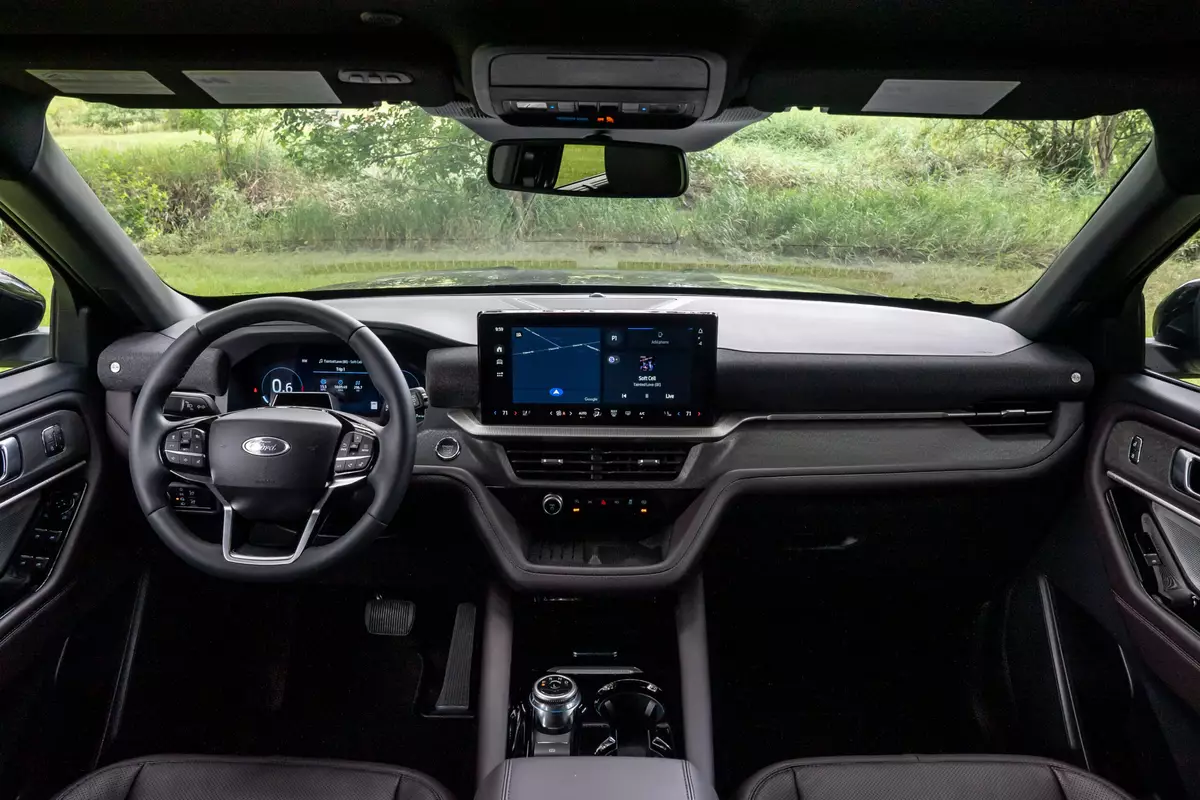
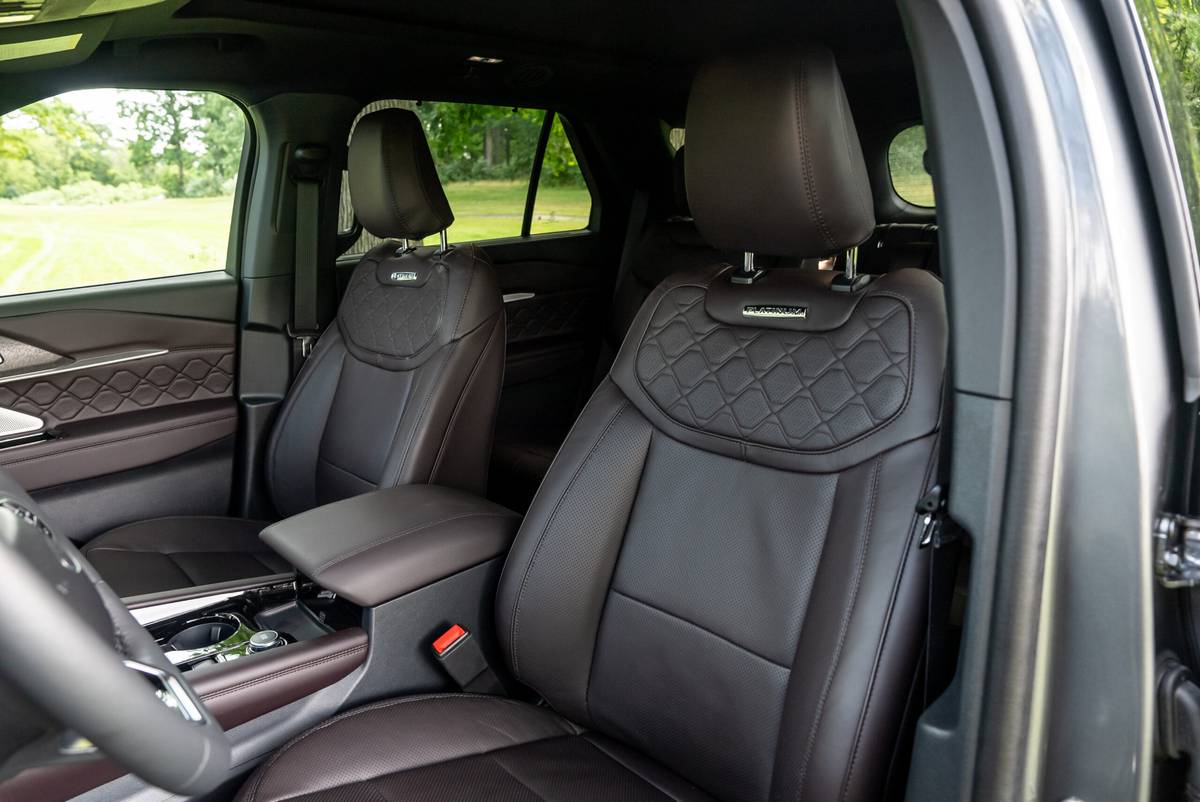
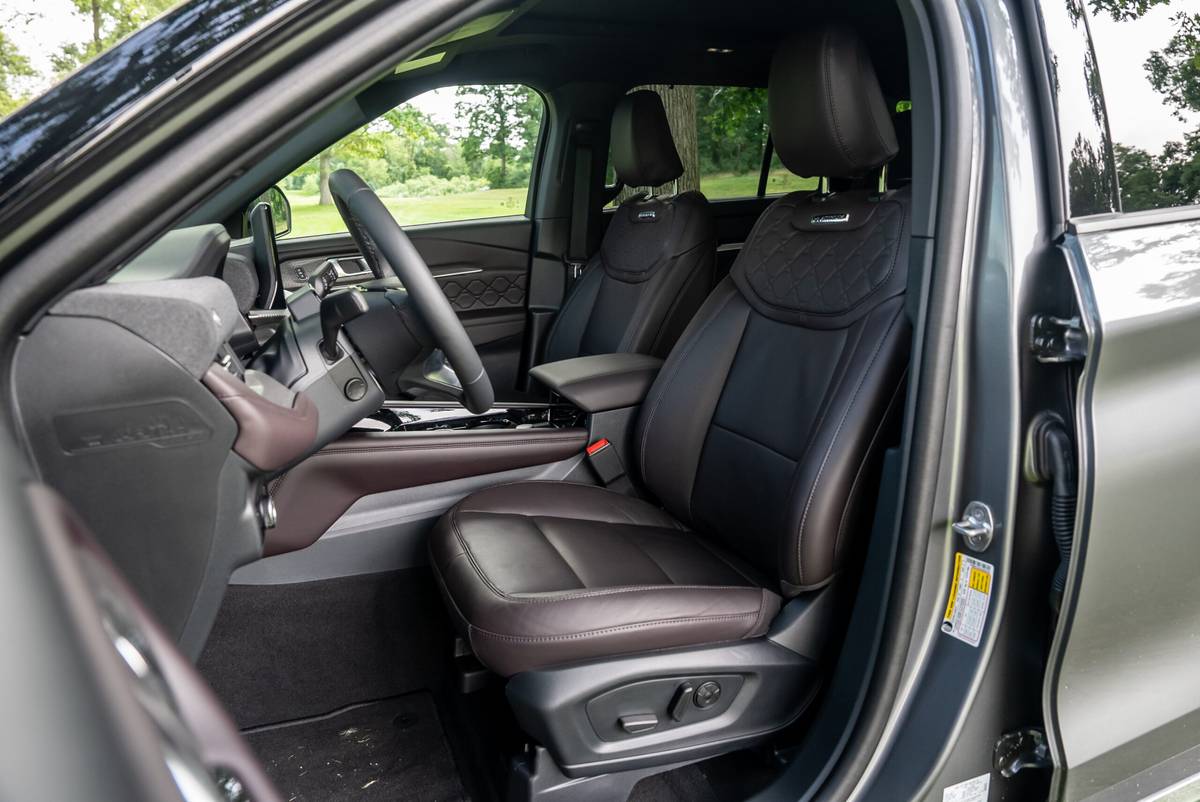
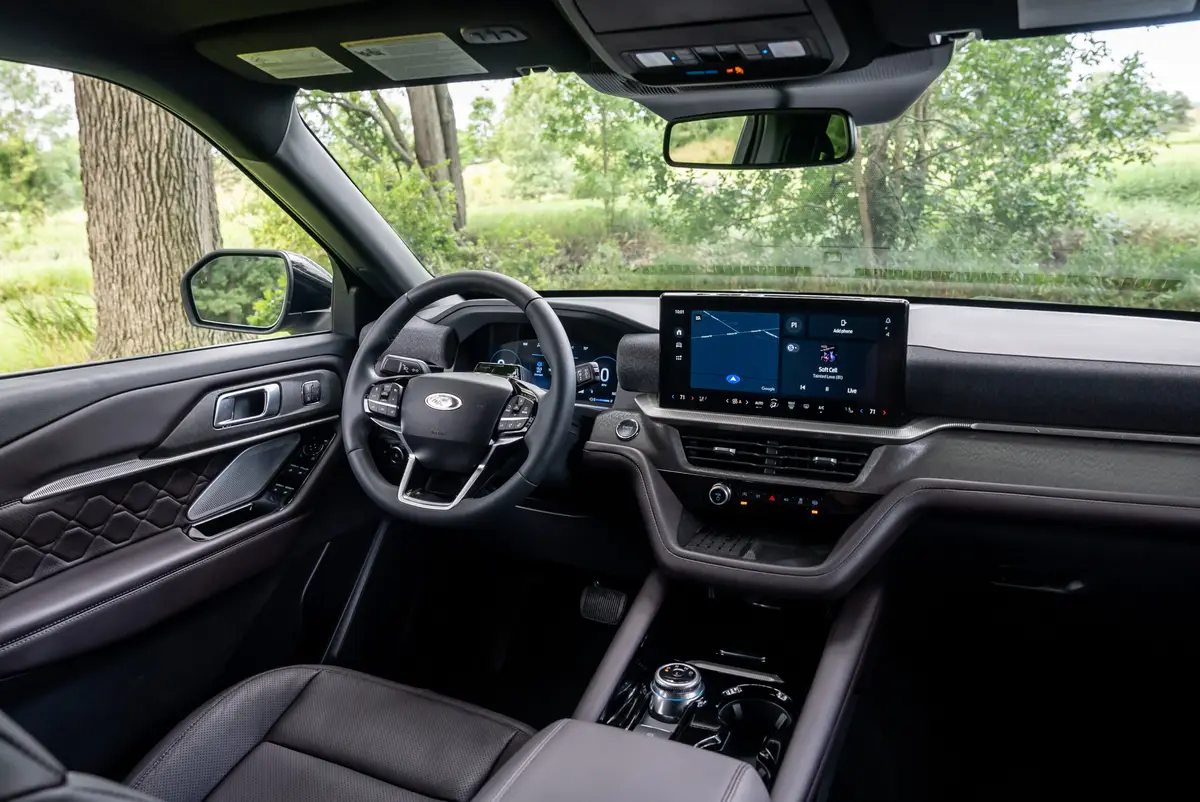
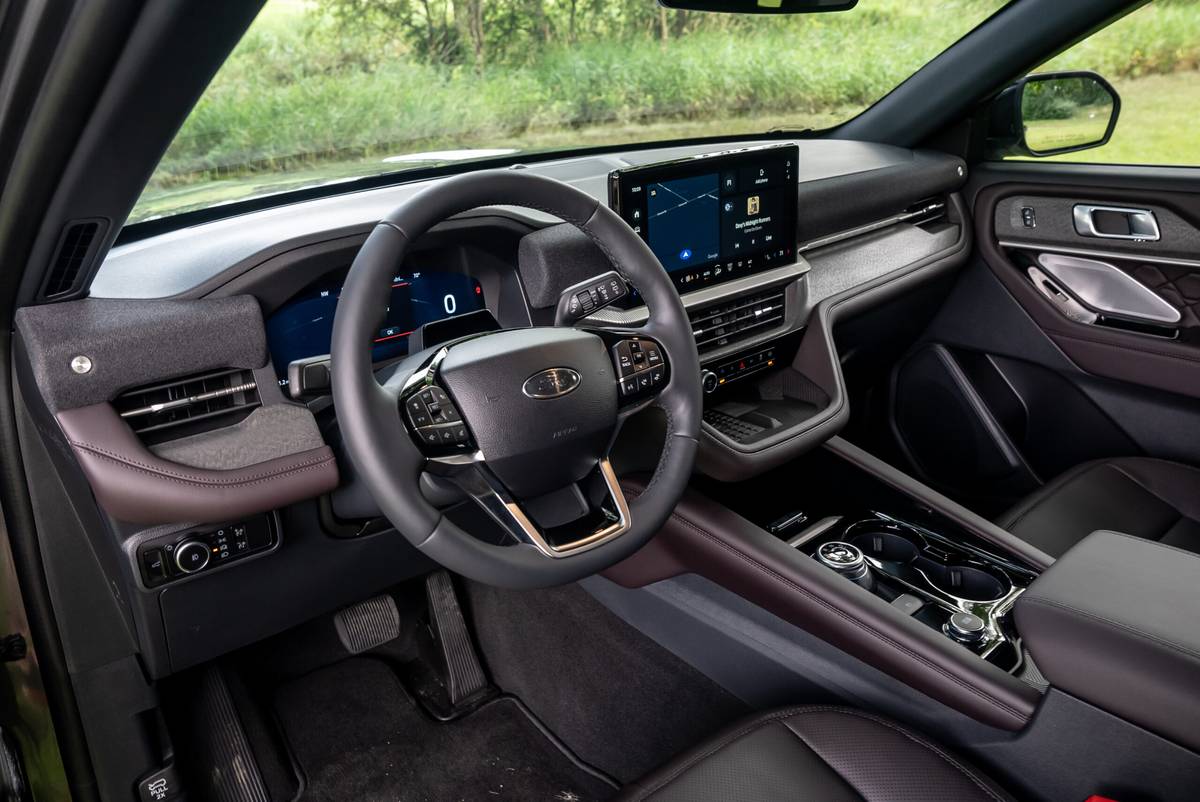
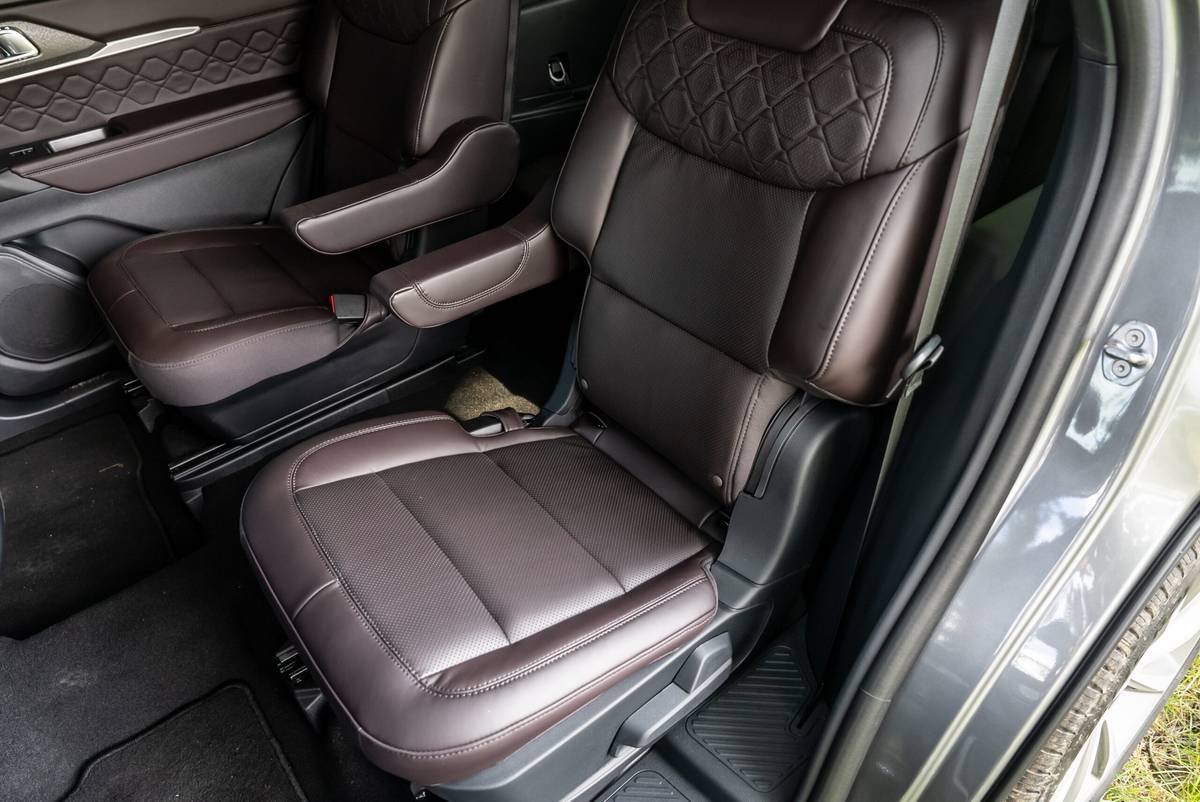
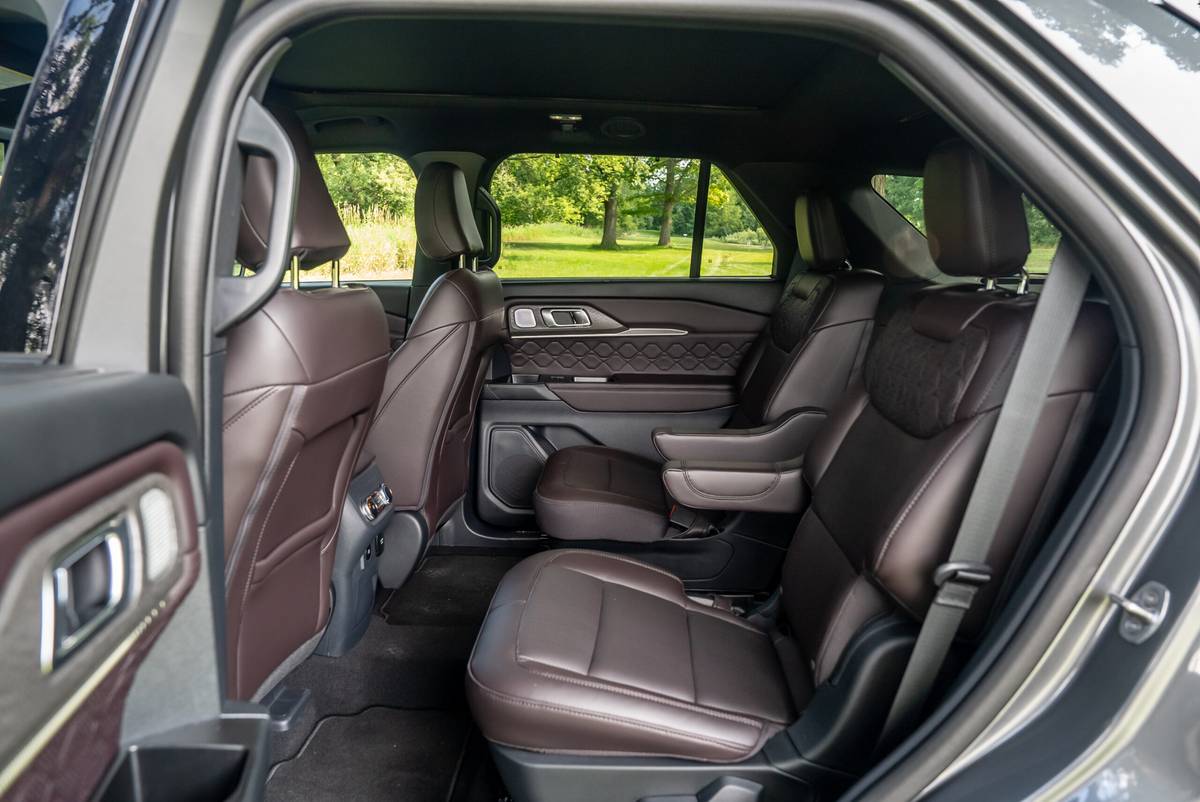
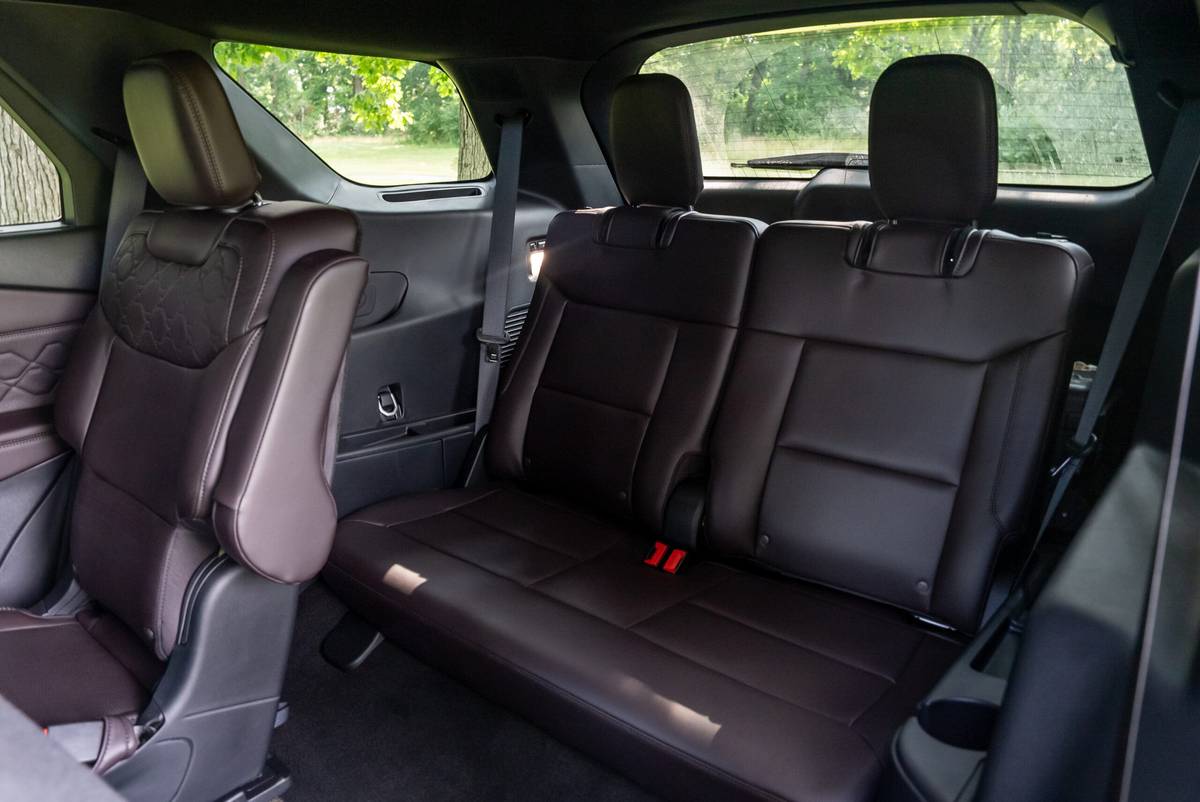












Keeping the Good Stuff
Where the Explorer truly shines is in the driving experience. It’s quite likely the most entertaining of any three-row SUV I’ve yet tried. The Explorer’s rear-wheel-drive chassis layout makes it the sports car of the three-row SUV set, and Ford’s own people say that the Explorer ST in particular is the fastest SUV you can buy for less than 60 grand. I believe it — either one of the two available powertrains is excellent.
Standard in the Active, ST-Line and Platinum is a turbocharged 2.3-liter four-cylinder making 300 horsepower and 310 pounds-feet of torque. It’s mated to a 10-speed automatic transmission sending power to the rear wheels. All-wheel drive is optional on all trims; none come with standard AWD. The other engine is a twin-turbocharged 3.0-liter V-6 making 400 hp and 415 pounds-feet of torque, and it’s standard on the ST and optional on the Platinum. Both engines can run on regular gas, but these ratings are achieved using premium fuel.
Related Video:
The base 2.3-liter engine is plenty powerful for most drivers, moving the Explorer with alacrity and doing so without sounding like a tractor engine (yeah, I’m looking at you, new Chevy Traverse). Some of the engine-noise sounds are piped in, but the overall sound it makes is sporty and entertaining instead of cringe-inducing. The 10-speed automatic shifts frequently, which one would expect a transmission with that many gears to do, I suppose, but it does so with exceptional smoothness. There’s no unexpected abruptness to it, and it downshifts quickly and eagerly when you stab the accelerator for some immediate action.
Things get even more exciting when you have the twin-turbo 3.0-liter V-6 under the hood. Whereas some of the Explorer’s competitors don’t feel like they’re making their advertised power, the “big”-engine Explorer most definitely does feel like it’s got all the beans. Accompanied by a throaty exhaust noise (but no turbo whoosh, oddly), the twin-turbo version of the Explorer is a genuinely entertaining vehicle — choose the Platinum trim if you’re looking for the posh life or the ST trim if you want to throw the kids around in their car seats in back. The only way to get a more powerful engine in a mainstream three-row SUV is to grab one of the last 2024 Dodge Durango SRT variants with their huge V-8 engines, but you’ll pay a lot more money for one of those. The 3.0-liter EcoBoost V-6 in the Explorer ST is even more powerful than the Durango’s 5.7-liter Hemi V-8, and it feels like it.
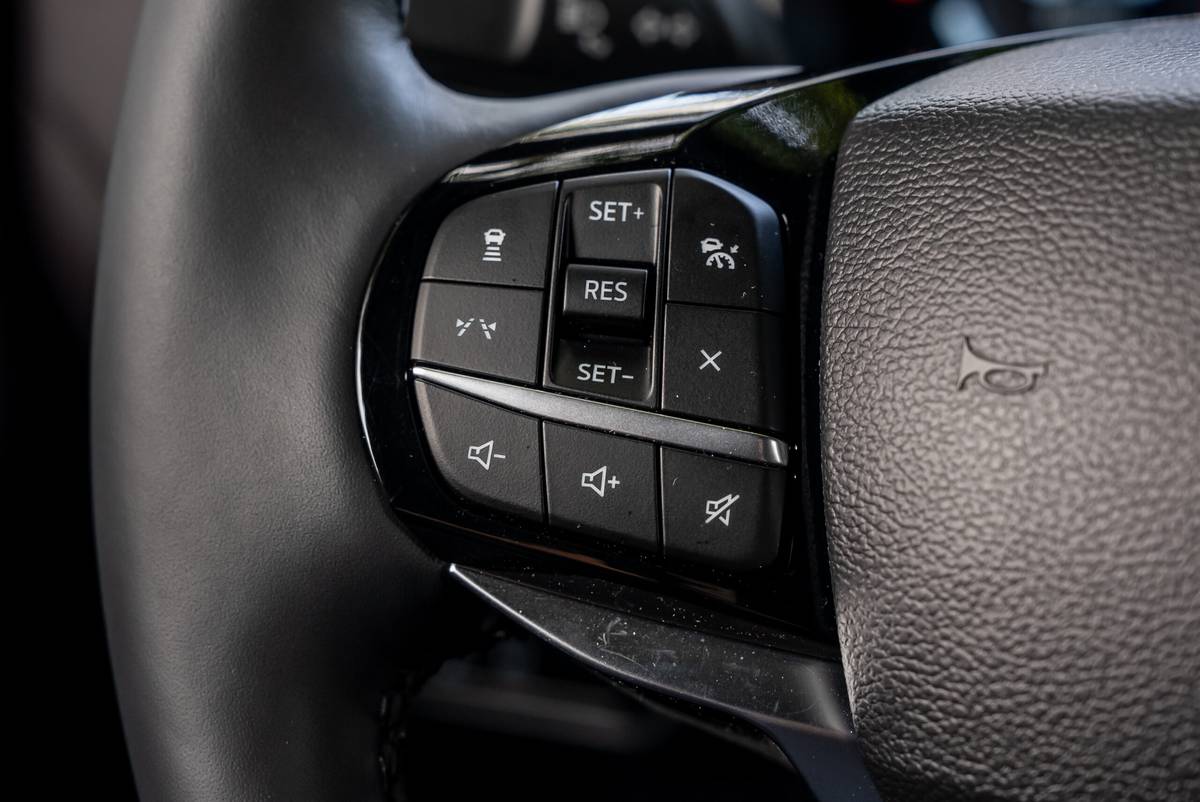
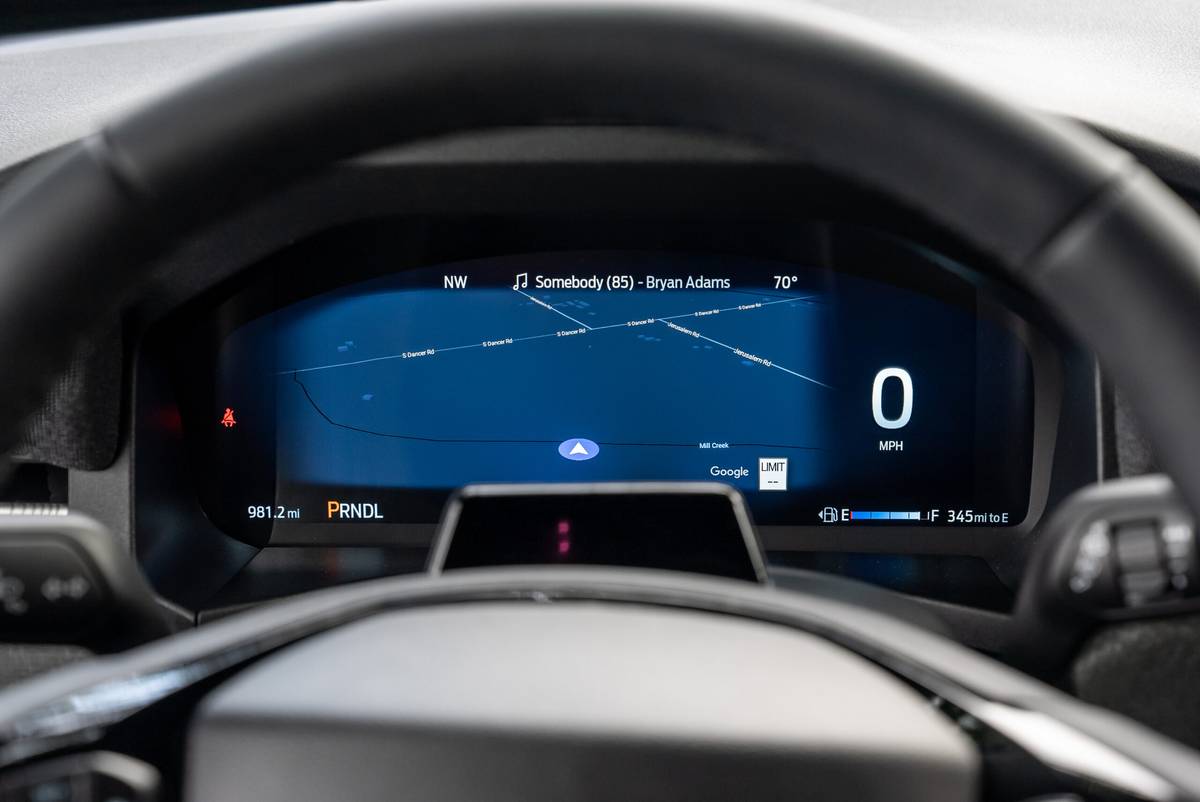
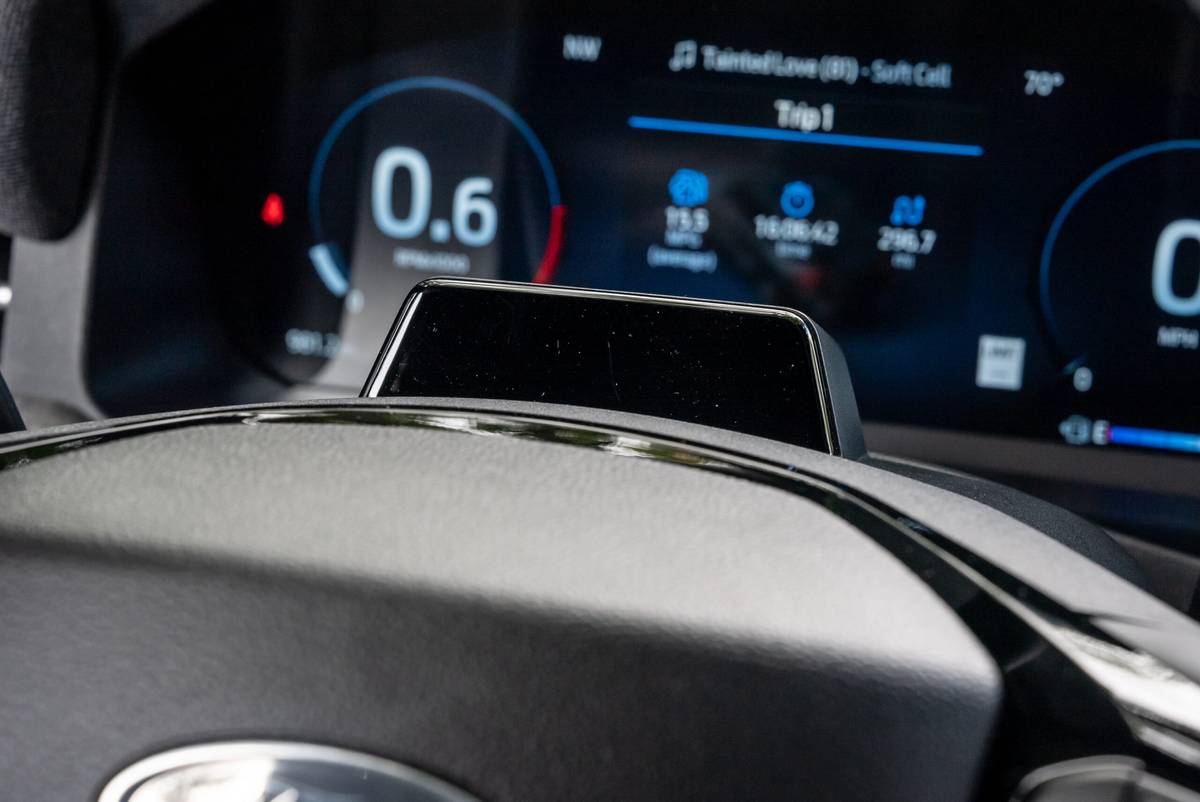
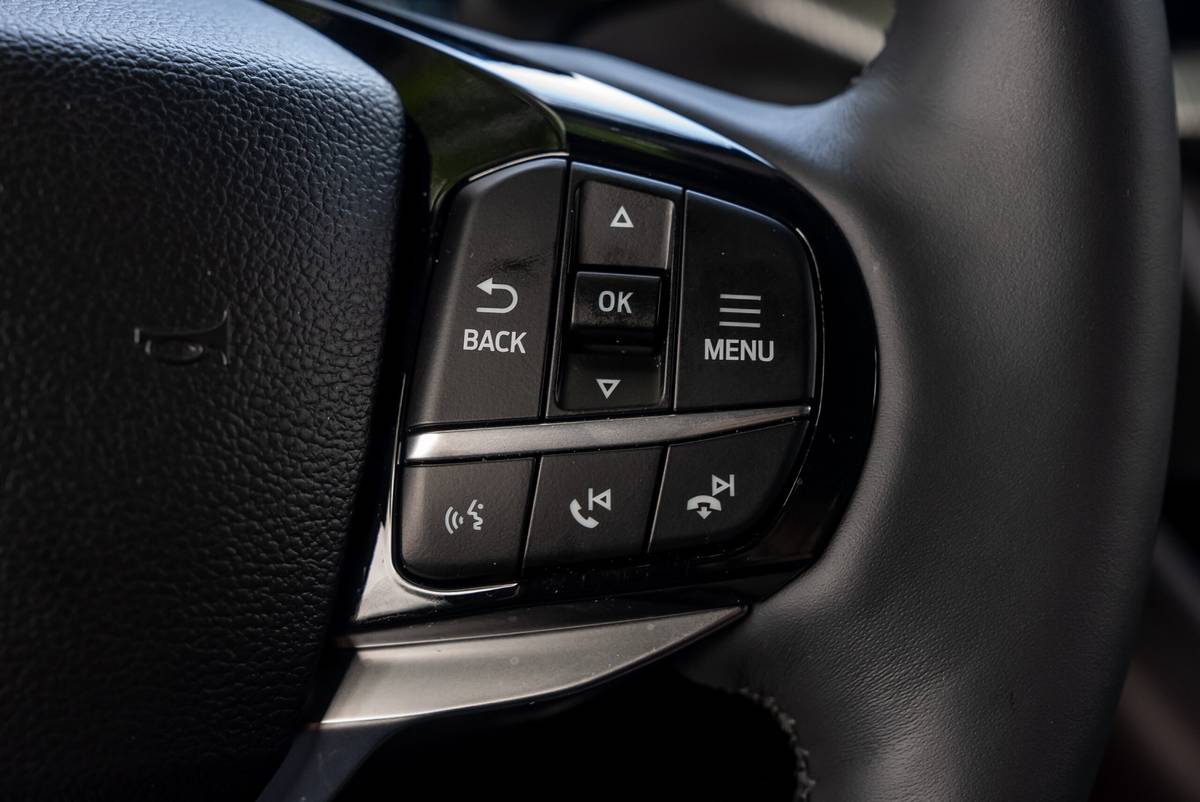
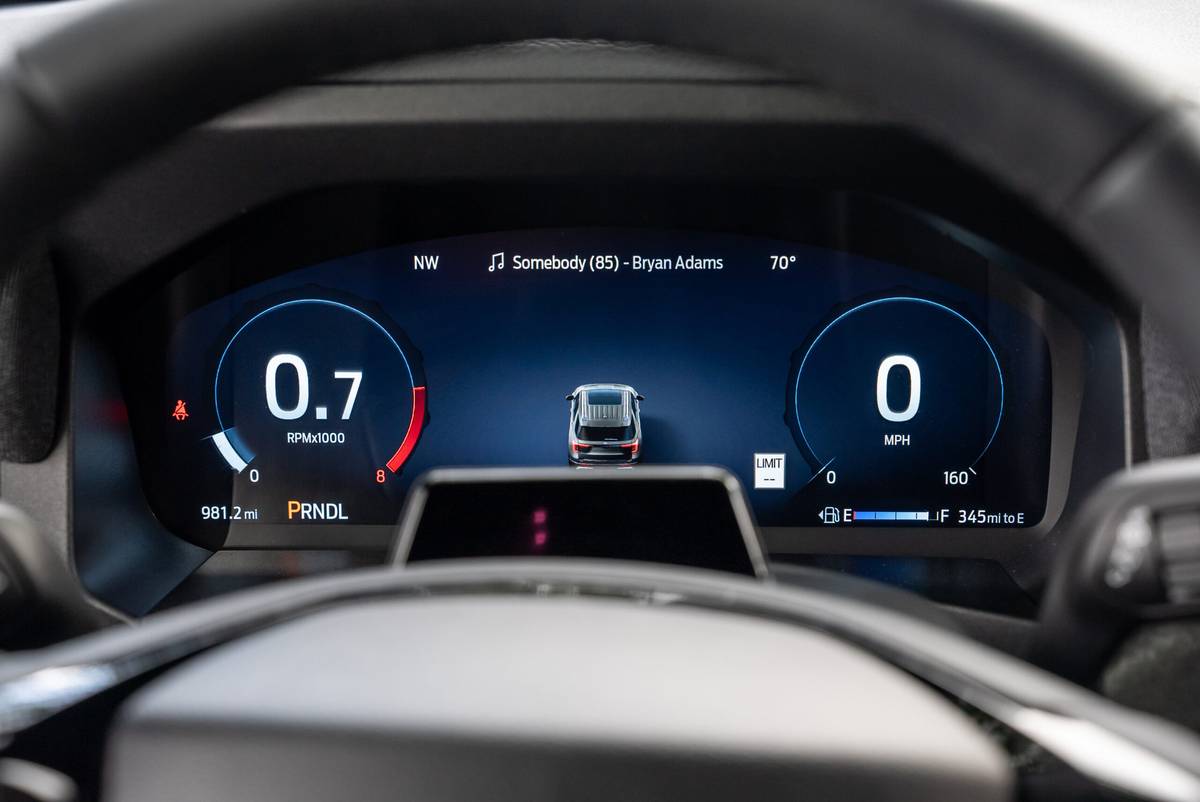
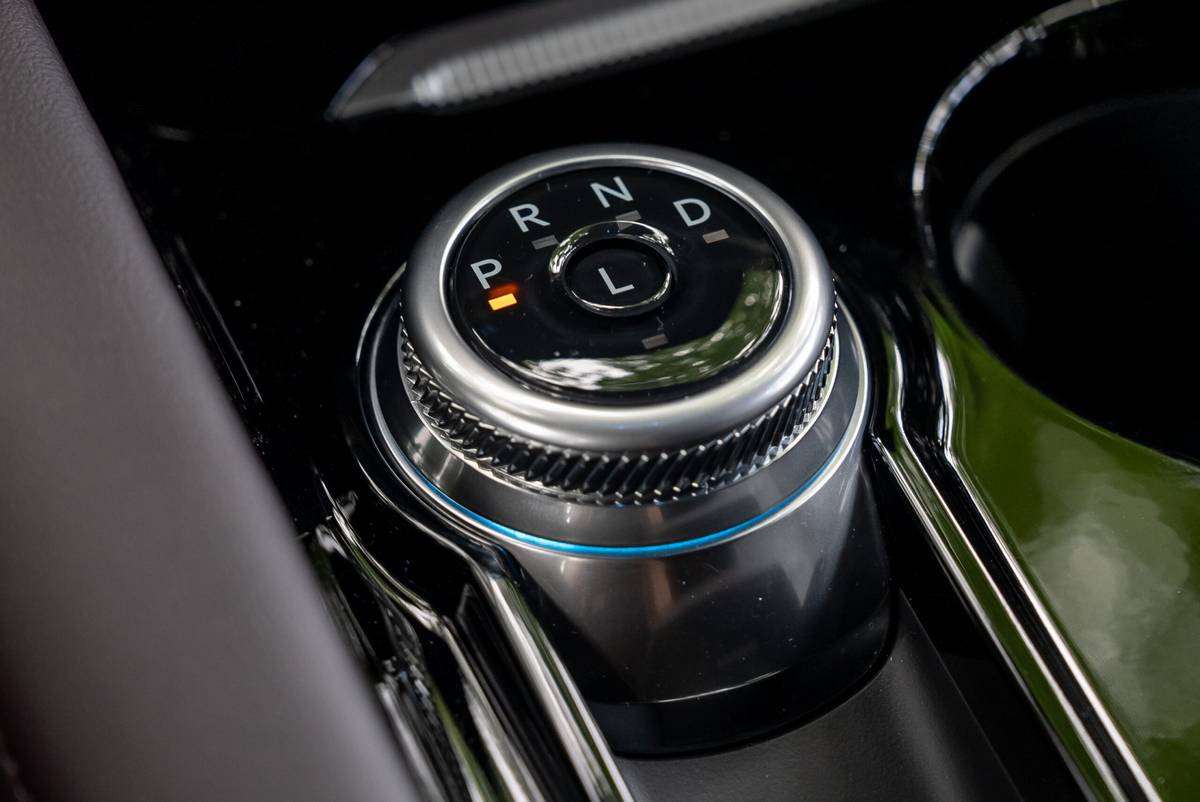
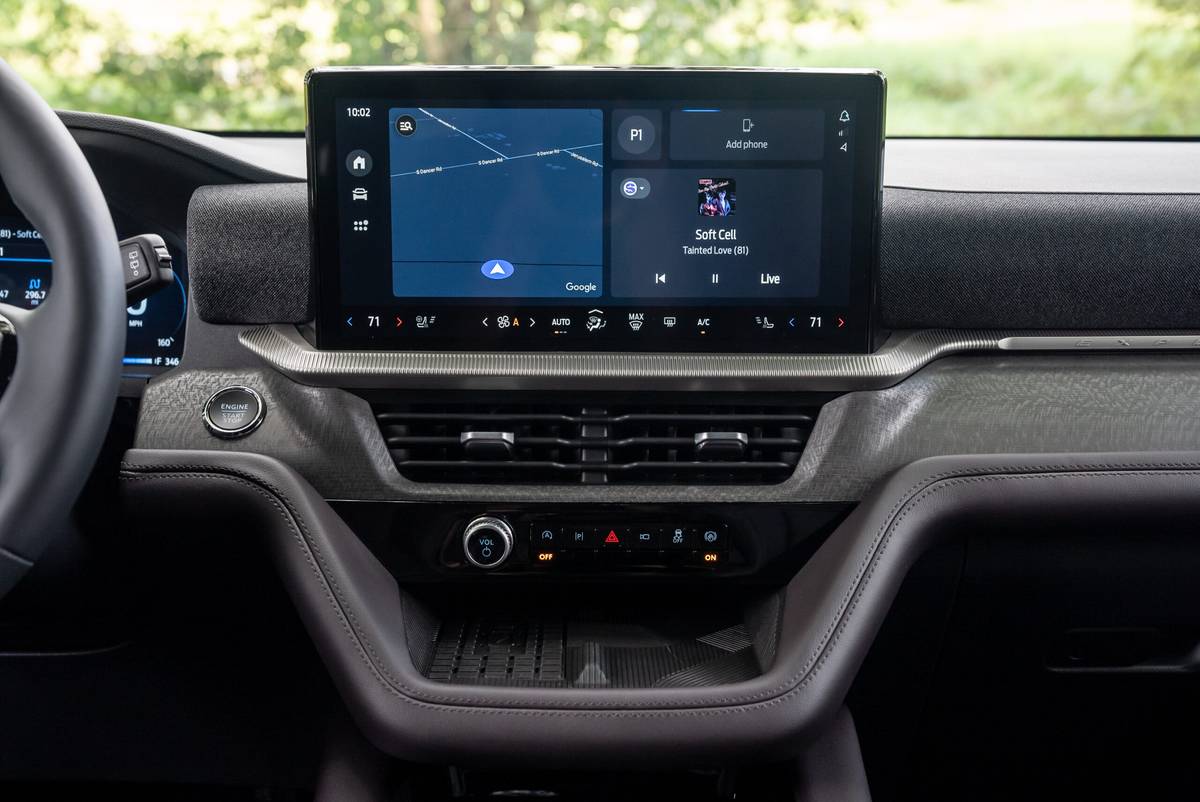
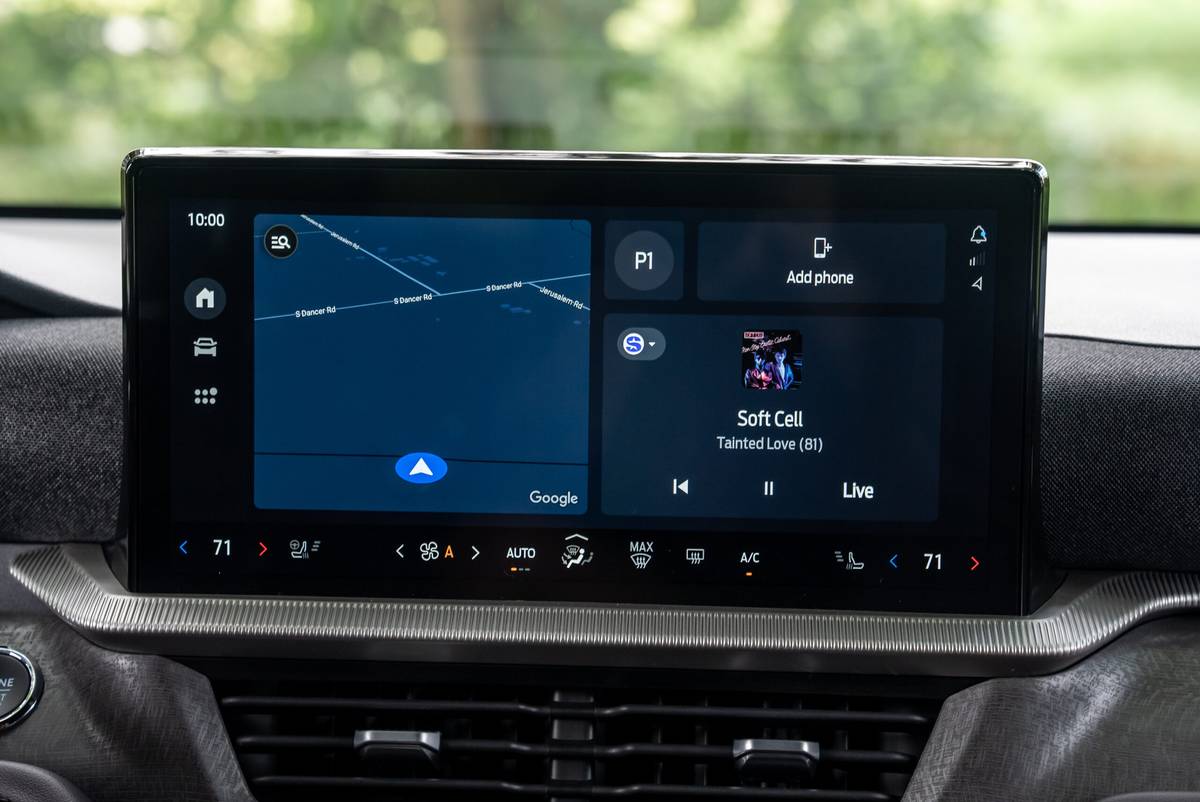
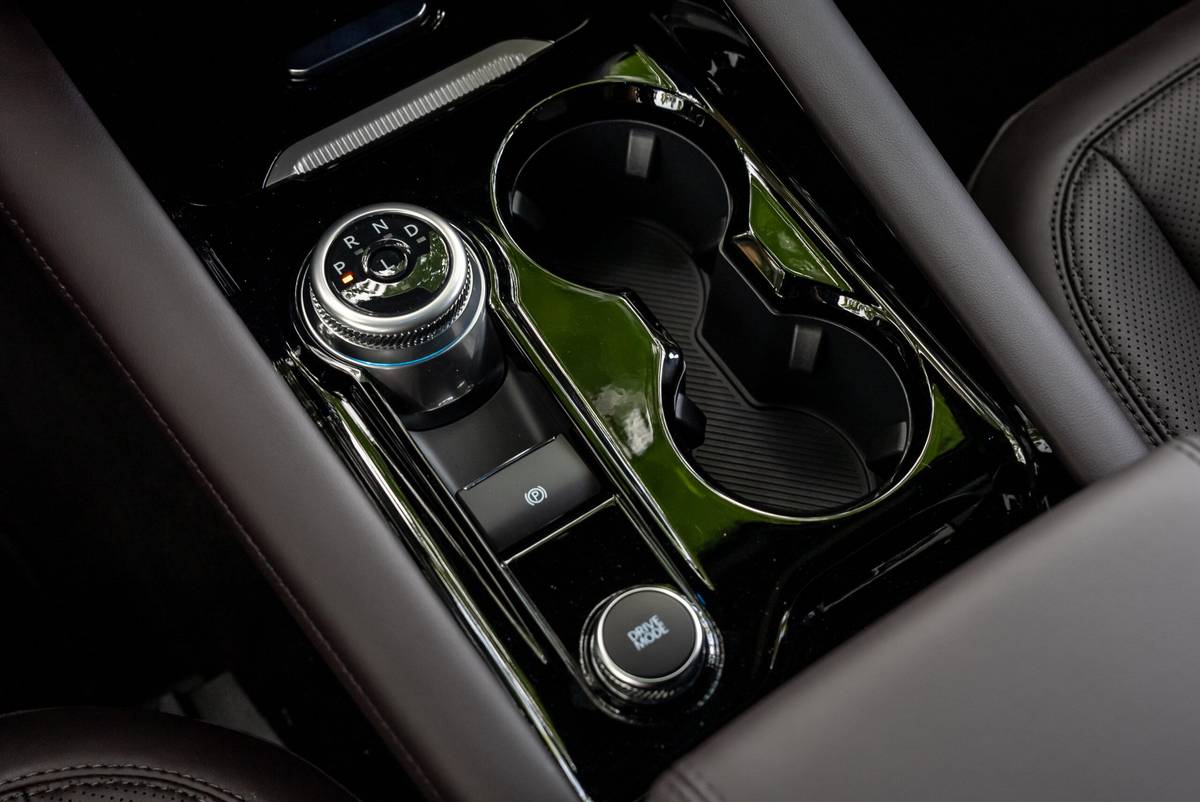
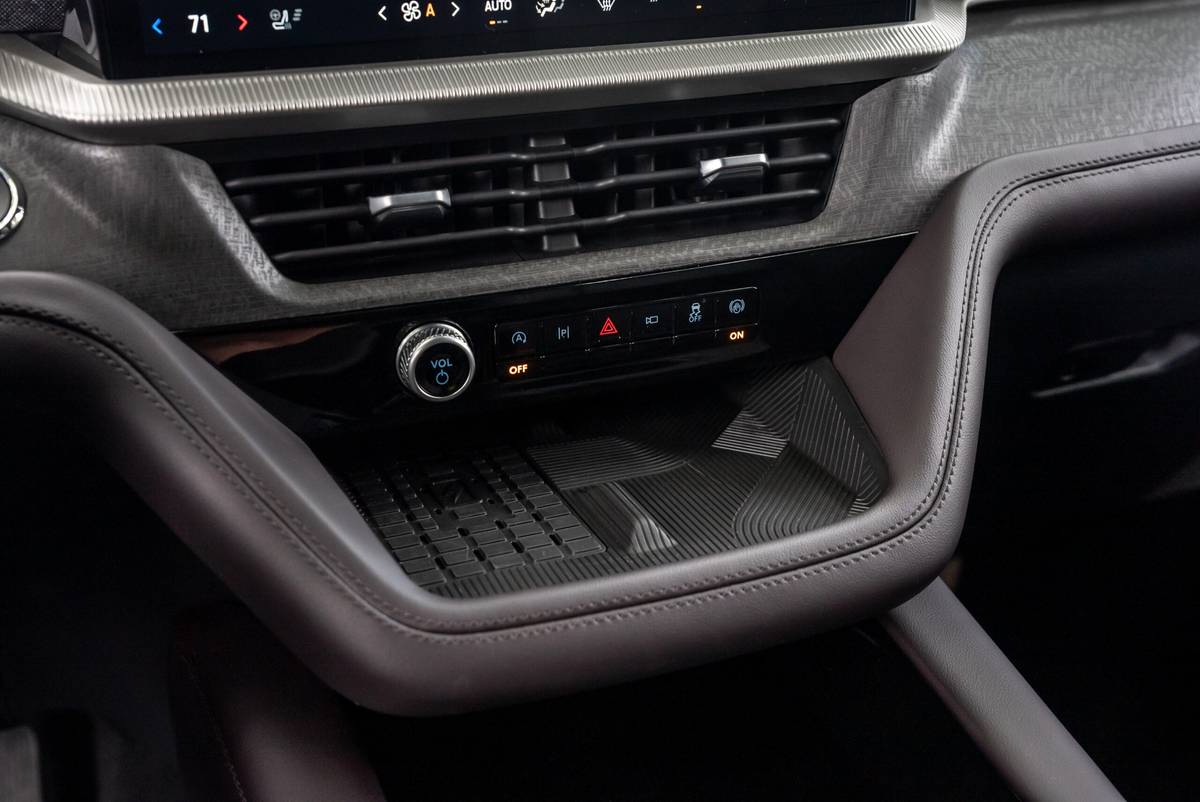










The ST in particular is an enjoyable drive partner. There’s significant heft to the steering and excellent feedback, as well. The ride is firm enough to be considered sporty, but not so firm as to be unpleasant. The sport-tuned suspension provides an outstanding balance between ride quality and handling prowess, and Ford was confident enough in the thing to allow us to throw the test vehicles around an autocross course. A few runs will prove to you that autocrossing a massive three-row SUV isn’t really all that much fun, and that the ST is really better suited to wider two-lane canyon roads than tight parking lot courses due to its sheer bulk and propensity toward significant understeer and tire scrub. Put any of the Explorer trims into Sport on the drive mode selector and a noticeable difference comes over the powertrain, with the transmission holding gears longer, the throttle mapping becoming more aggressive and the overall responsiveness of the vehicle becoming more urgent. It’s genuinely entertaining, which is something that can’t really be said about most of the vehicles in this category save perhaps the turbocharged powertrain in the Volkswagen Atlas, which is spunky and quick.
But this is not new behavior for the Explorer. In our last comparison test where the Explorer was a participant back in 2019, we cited the Ford’s dynamics, powertrain, handling and braking as its high points, too. It’s just as good now as it was then and is still superior to its rivals in those areas. But prior Explorers have had low-rent interior materials and tight passenger confines, and unfortunately, only one of those areas has been improved for 2025.
Upgraded Environs
That would be the cabin itself. The interior gets a redesign that makes for a much more user-friendly dashboard with improved storage, a more accessible wireless charging pad and dramatically improved materials quality throughout the vehicle. Front and center is a standard 13.2-inch touchscreen in all models — no more vertical portrait-oriented dash screen that we found problematic and more style over substance. Instead, there’s a big, bright, easy-to-use screen that’s just a few degrees off the steering wheel, making it easy for the driver to reach. It’s running a new Google-based system that Ford has heavily massaged to its requirements, and it’s now named the Ford Digital Experience (bye-bye, two decades of Ford Sync).
Like all of these new Google-based systems from different automakers (GM, Honda, Volvo, Polestar and the list is seemingly growing daily), there are pros and cons to this software switch. It allows people with a significant presence in the Google ecosystem to integrate a lot of their apps into the vehicle seamlessly if that’s what they want to do. Ford also still includes Apple CarPlay along with Android Auto, so it hasn’t abandoned customers who are part of the Apple universe. But like all of these new Google systems, the Ford Digital Experience relies on a data link to utilize cloud computing for a lot of functions, including a lot of voice commands. No data link from the car to the cloud, no functioning voice commands — better hope you live in an urban area where the data signal is strong or you’ll quickly discover one of the main cons of this system. When it does work, it works quite well. When you have no data, however, you have to do things the old fashioned way: by hunting with your finger on the screen.
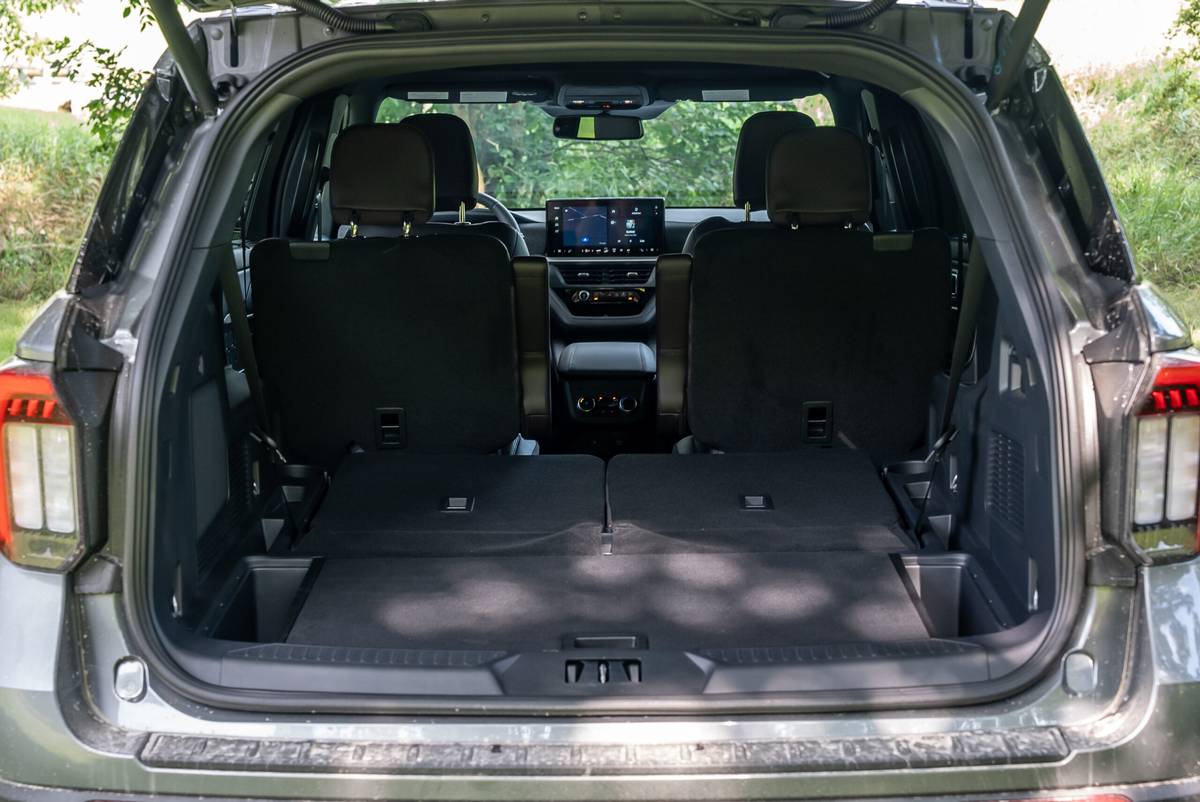
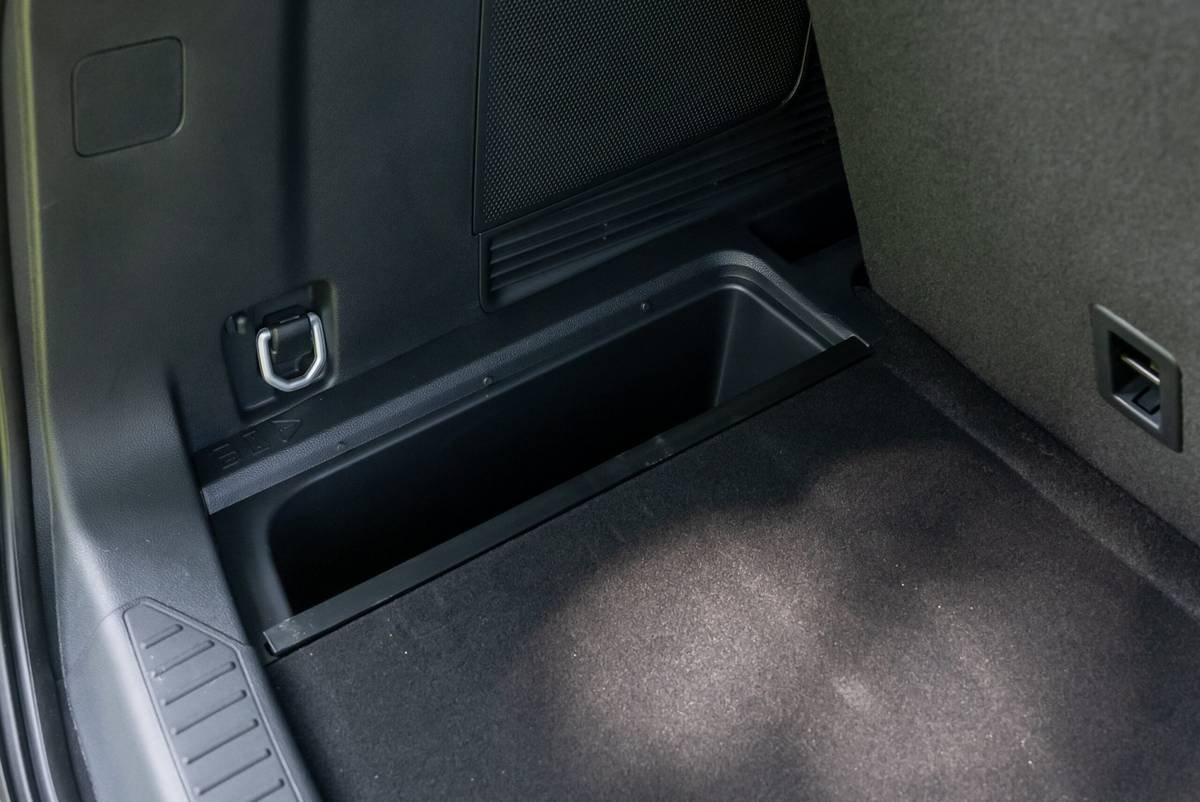
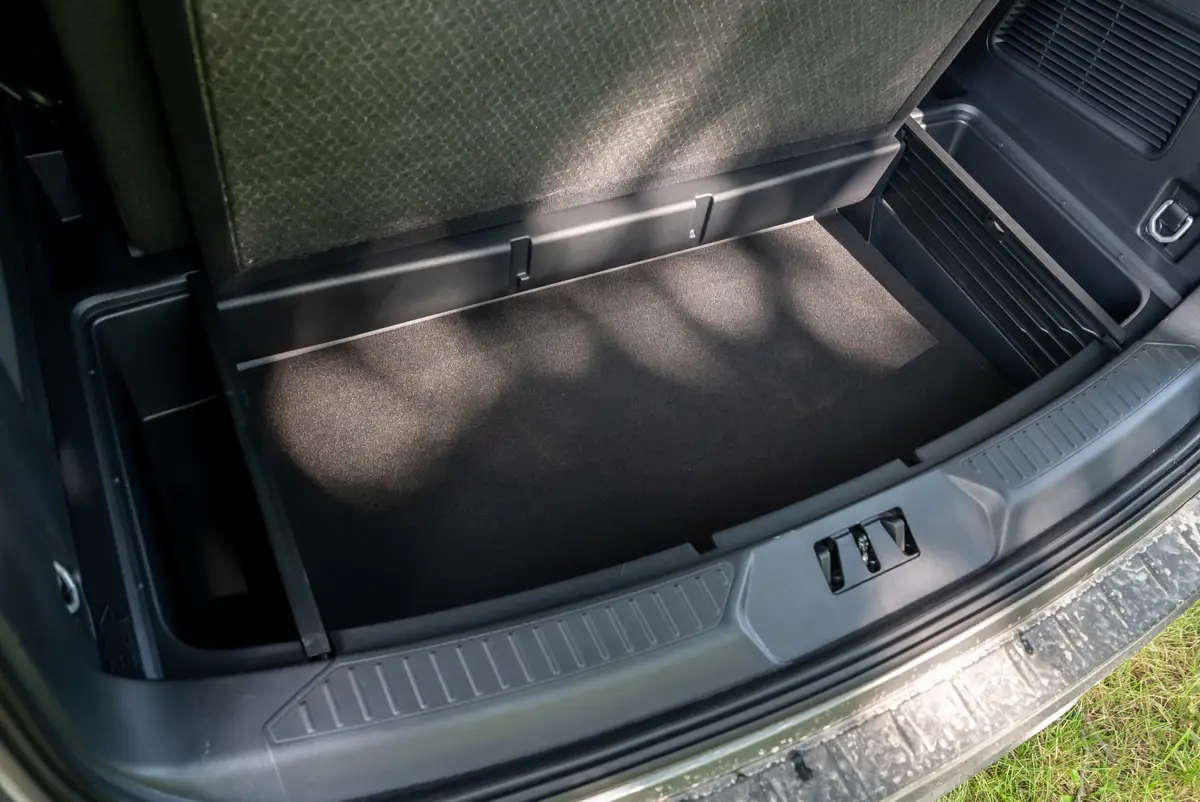
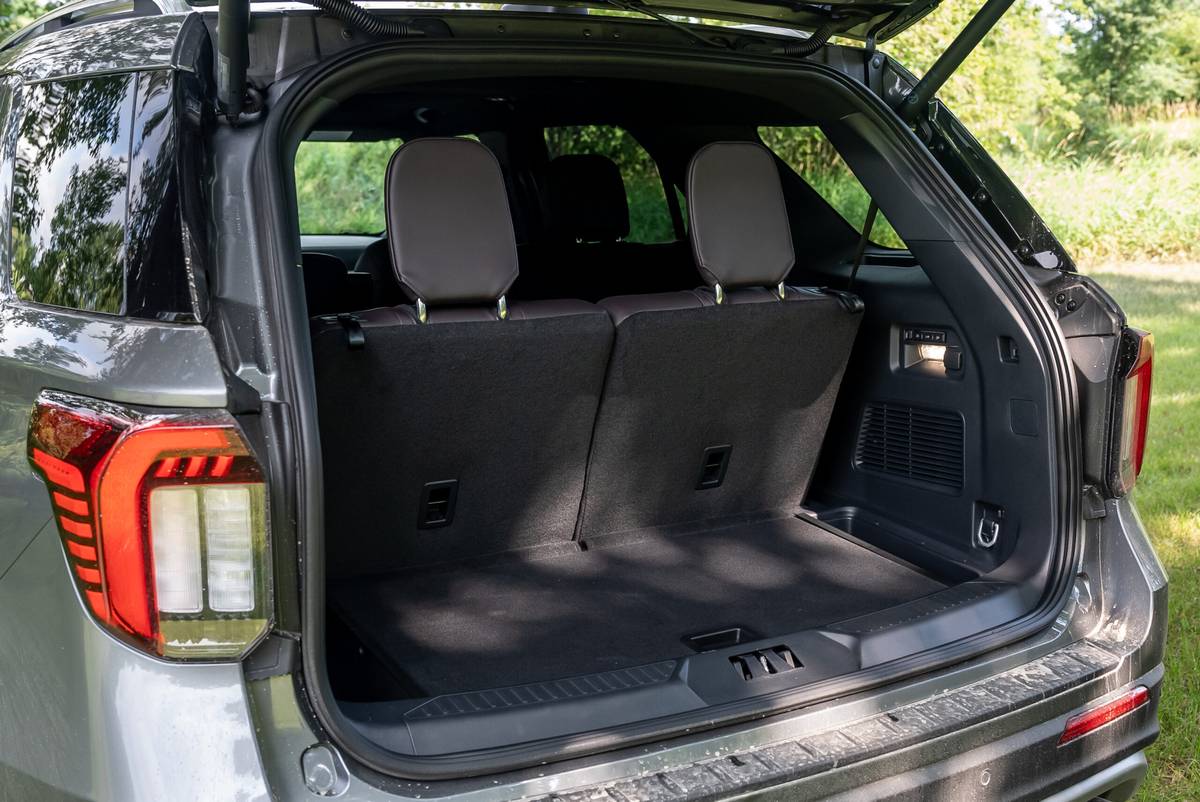

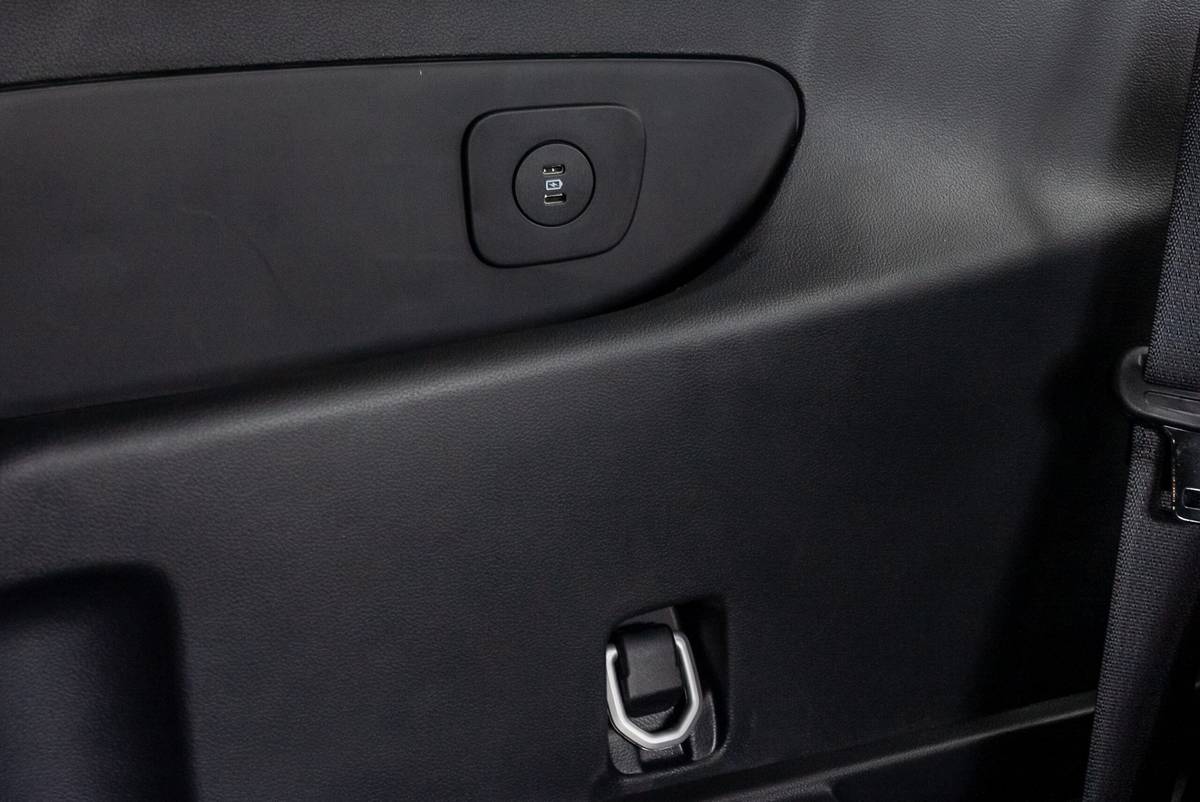
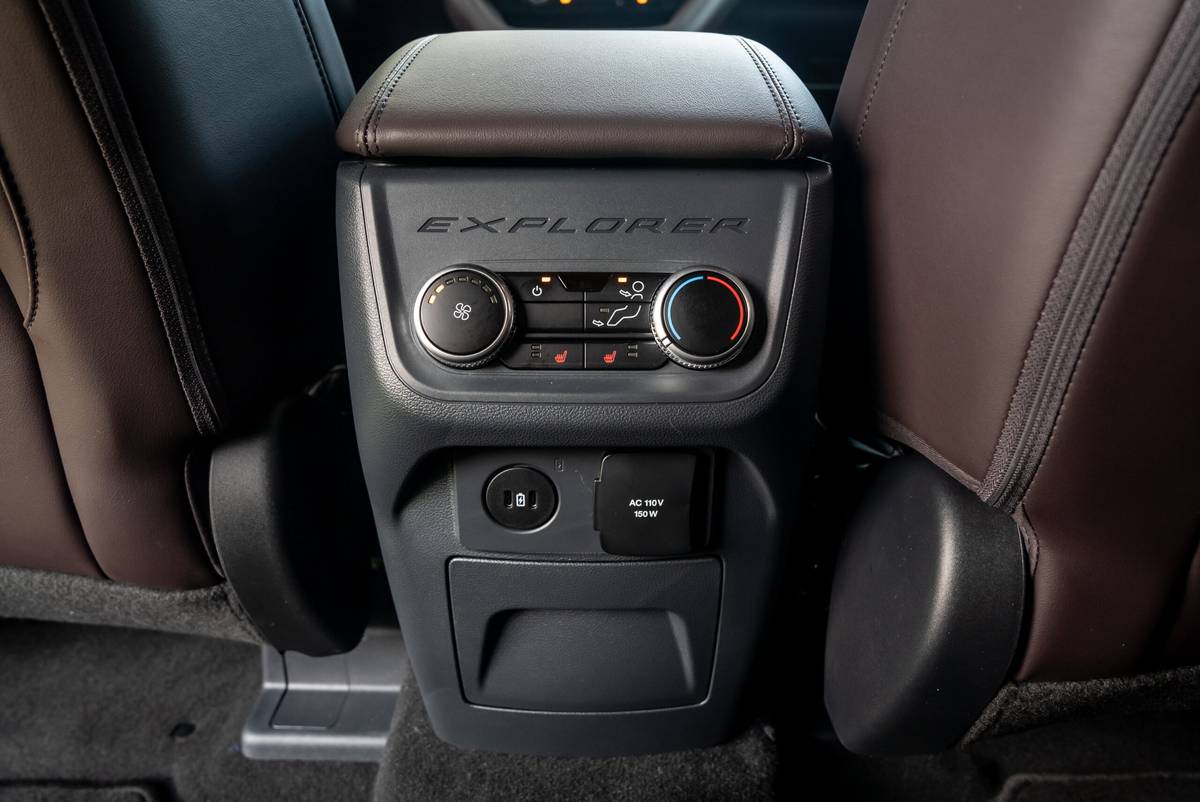
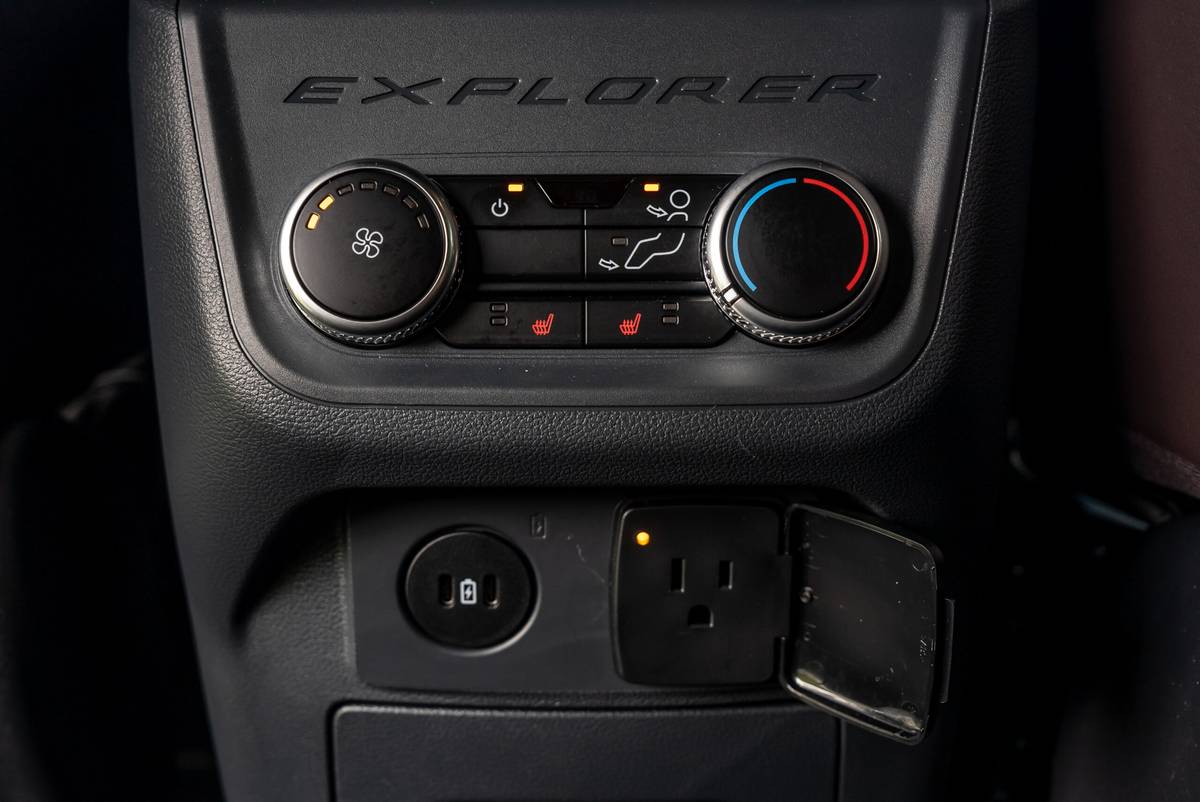








That screen also now houses more controls — including all of the climate controls — which also brings mixed feelings. On one hand, Ford has kept things like audio volume and engine auto stop-start as dedicated hard controls, so that’s good. But putting the climate controls in the touchscreen complicates things like merely wanting to switch from fresh to recirculated air, requiring two button pushes on the screen to get to that menu. At least the steering wheel doesn’t have any touch-sensitive controls — they’re all real buttons, thankfully. And when compared with some rival brands’ new multimedia systems, the Ford Digital Experience is worlds better. It’s not inscrutable like Volkswagen’s or rife with wasted space like Toyota’s.
The tech upgrade gets mostly positive marks from me, being easier to use than the old system and in a much more user-friendly landscape orientation instead of the portrait style of the prior Explorer’s available larger screen. The materials upgrade in the cabin also gets high marks — the cockpit genuinely feels more expensive and sophisticated, and if you opt for the Mojave Dusk (purplish) leather upholstery on the Platinum, you get a stylish-looking interior that befits the lofty price of that model.
More From Cars.com:
- 2025 Ford Explorer Up Close: Nicely Updated, Still Compromised
- Auto Show Faceoff: 2024 Chevrolet Traverse Vs. 2025 Ford Explorer
- What’s the Best 3-Row SUV for 2024?
- 2024 Ford Explorer: Which Trim Level Should You Buy?
- Shop for a 2025 Ford Explorer
Unimproved Space
But the area in the new Explorer that didn’t get improvements is everything aft of the front seats. Ford didn’t change up the packaging of the interior at all, so the second-row captain’s chairs remain narrow, undersize affairs that provide virtually no bolstering. The third row is suitable only for children due to its lack of legroom and seating position that has passengers’ knees at their chins. The prior Explorer didn’t do so hot in our Car Seat Check, and while we haven’t yet tested this new one, with Ford not making significant changes to the packaging efficiency and layout of the Explorer for 2025, we wouldn’t expect the updated model to fare any better.
What this boils down to is that the new 2025 Explorer improves in a couple of areas (interior materials quality and the multimedia system) that we had issue with when it transitioned to this RWD platform for the 2020 model year. It’s maintained its position as an amazing driver’s vehicle, with powertrain performance and chassis dynamics that punch well above its weight — comparisons with luxury-brand SUVs are not inappropriate. But Ford did not address the areas (comparatively small seats and cargo room) that keep it from being one of our top family-friendly picks and a truly effective alternative to a minivan.
Value’s Still a Problem, Too
We didn’t find the previous Explorer to be a terribly good value for the money, either, but the new one improves on that somewhat thanks to the simplification of its lineup and the addition of a lot of standard equipment, especially on the base Active trim. While the starting price has gone up by more than $2,700 from 2024 to 2025 and is now $41,350 (all prices include destination fee), you now get new equipment like that big multimedia screen, front-row heated seats and a 12.3-inch digital instrument panel. BlueCruise, Ford’s hands-free cruise control system, also debuts on the 2025 Explorer. It’s optional on all trims except the Active, and it works as well here as it does in other Ford offerings — but it does require a Connected Services subscription to use.
But when you start exploring the top trim level prices, or you start adding option packages to the lower ones, the Explorer’s price quickly runs away from competitors. Our most recent comparison test of three-row SUVs saw the most expensive models coming in at around $55,000. An optioned-up ST-Line trim is in that mid-$50,000 price range with its base 2.3-liter engine and AWD. A well-optioned 2025 Explorer Platinum with the twin-turbo 3.0-liter V-6 would have blown through that ceiling by around $60,000. A completely loaded 2025 Explorer ST would’ve truly crowned the contest with an eye-popping sticker price just north of $68,000. Yikes.
If you keep your aspirations lower, however, and aim for an AWD ST-Line with the standard 2.3-liter engine and forgo some options like a panoramic moonroof, power-folding side mirrors, driver-seat memory and other niceties, you’re still looking at $50,000 or so for an excellent driver-oriented three-row SUV. If driving enjoyment is your priority, the Explorer is still tops. If family hauling, cargo versatility and value for the money are higher on your list, be sure to compare the Explorer with others in the class.
Cars.com’s Editorial department is your source for automotive news and reviews. In line with Cars.com’s long-standing ethics policy, editors and reviewers don’t accept gifts or free trips from automakers. The Editorial department is independent of Cars.com’s advertising, sales and sponsored content departments.

Detroit Bureau Chief Aaron Bragman has had over 25 years of experience in the auto industry as a journalist, analyst, purchasing agent and program manager. Bragman grew up around his father’s classic Triumph sports cars (which were all sold and gone when he turned 16, much to his frustration) and comes from a Detroit family where cars put food on tables as much as smiles on faces. Today, he’s a member of the Automotive Press Association and the Midwest Automotive Media Association. His pronouns are he/him, but his adjectives are fat/sassy.
Latest news
